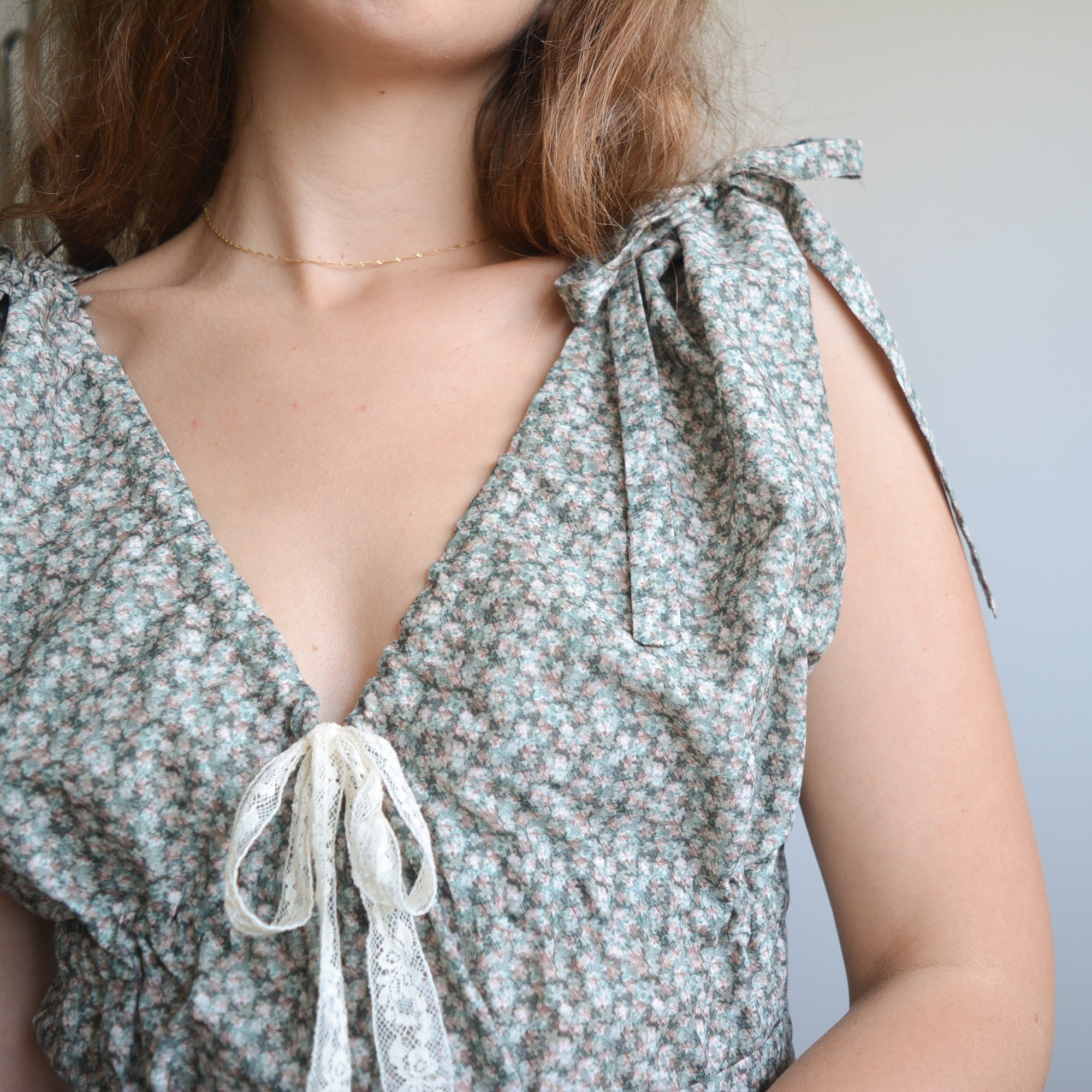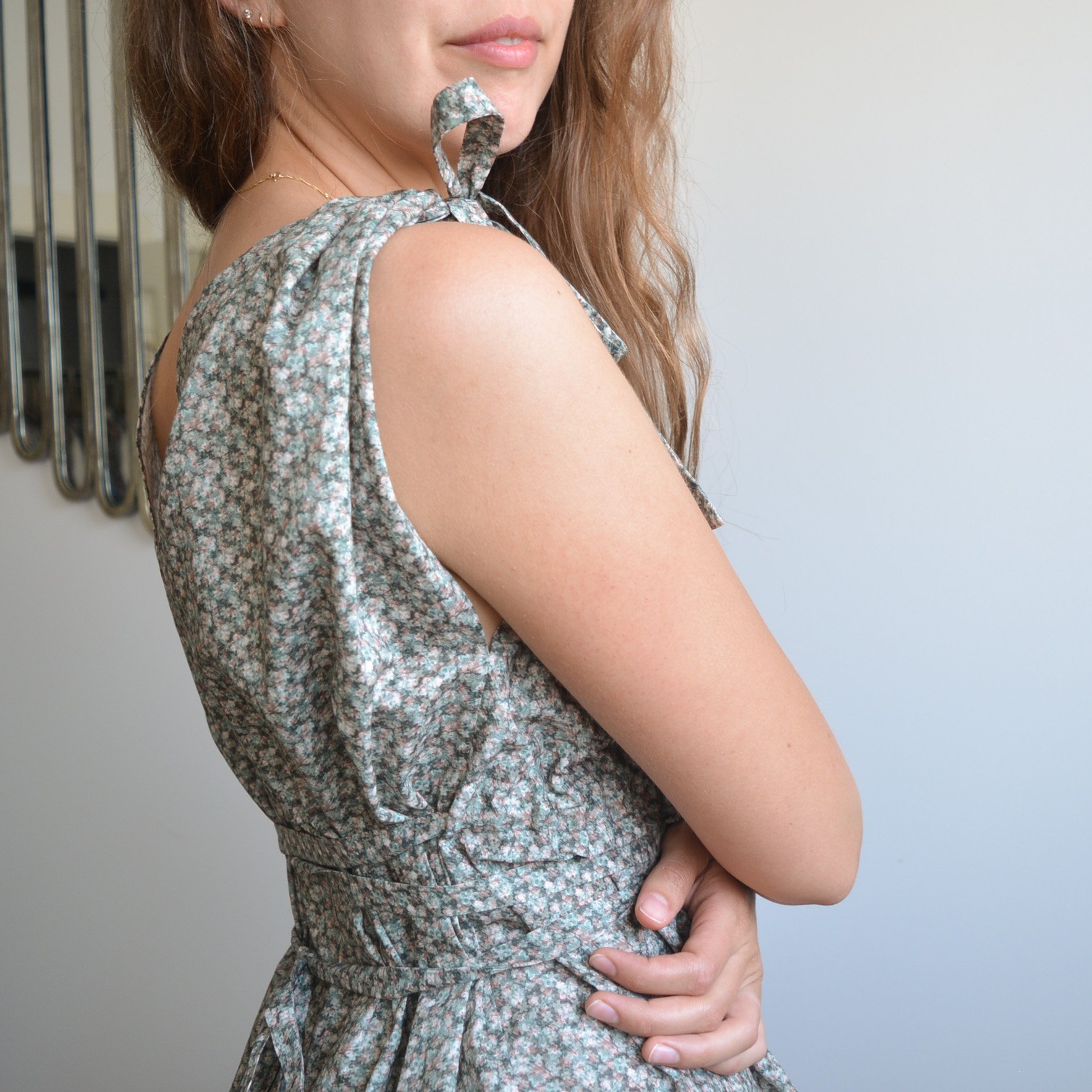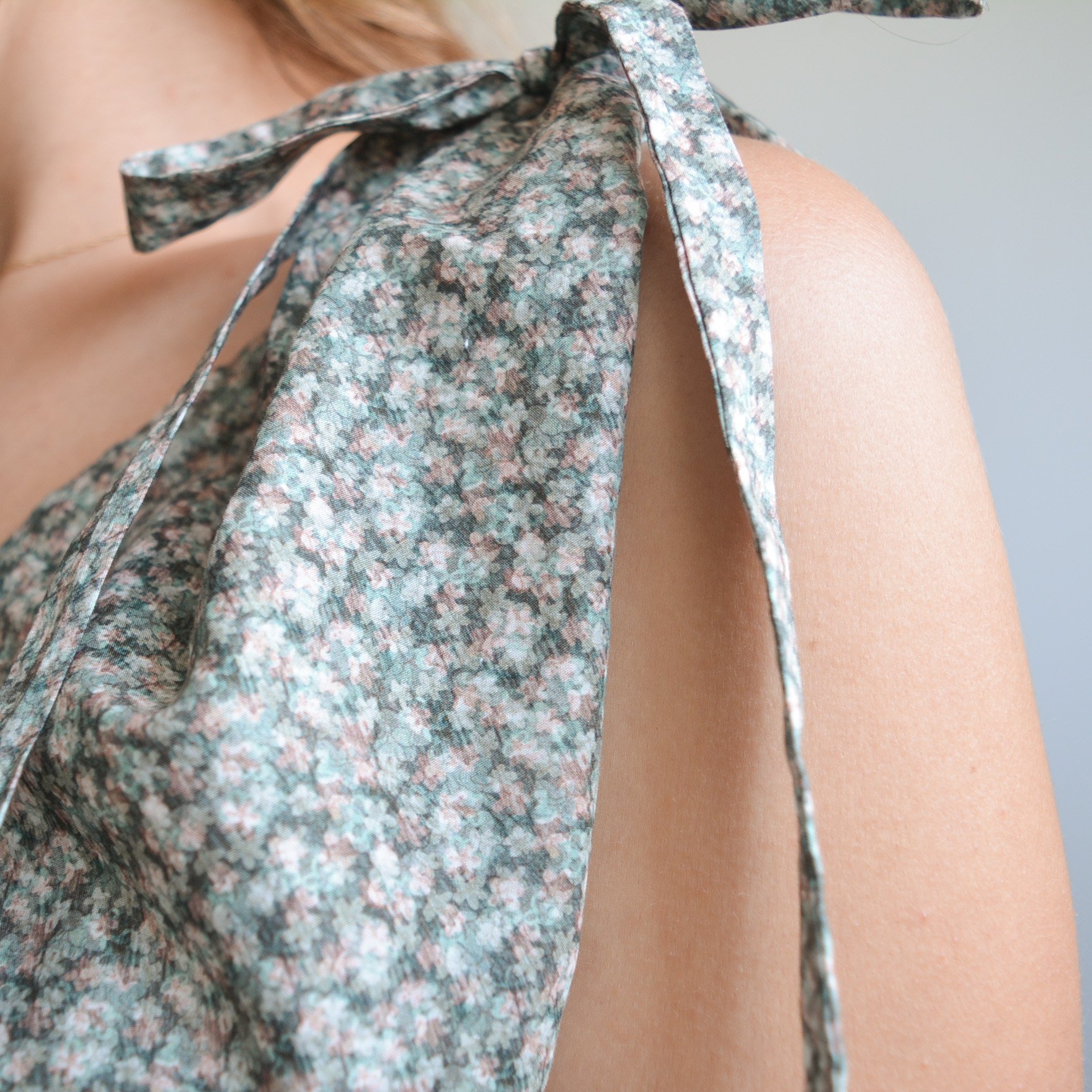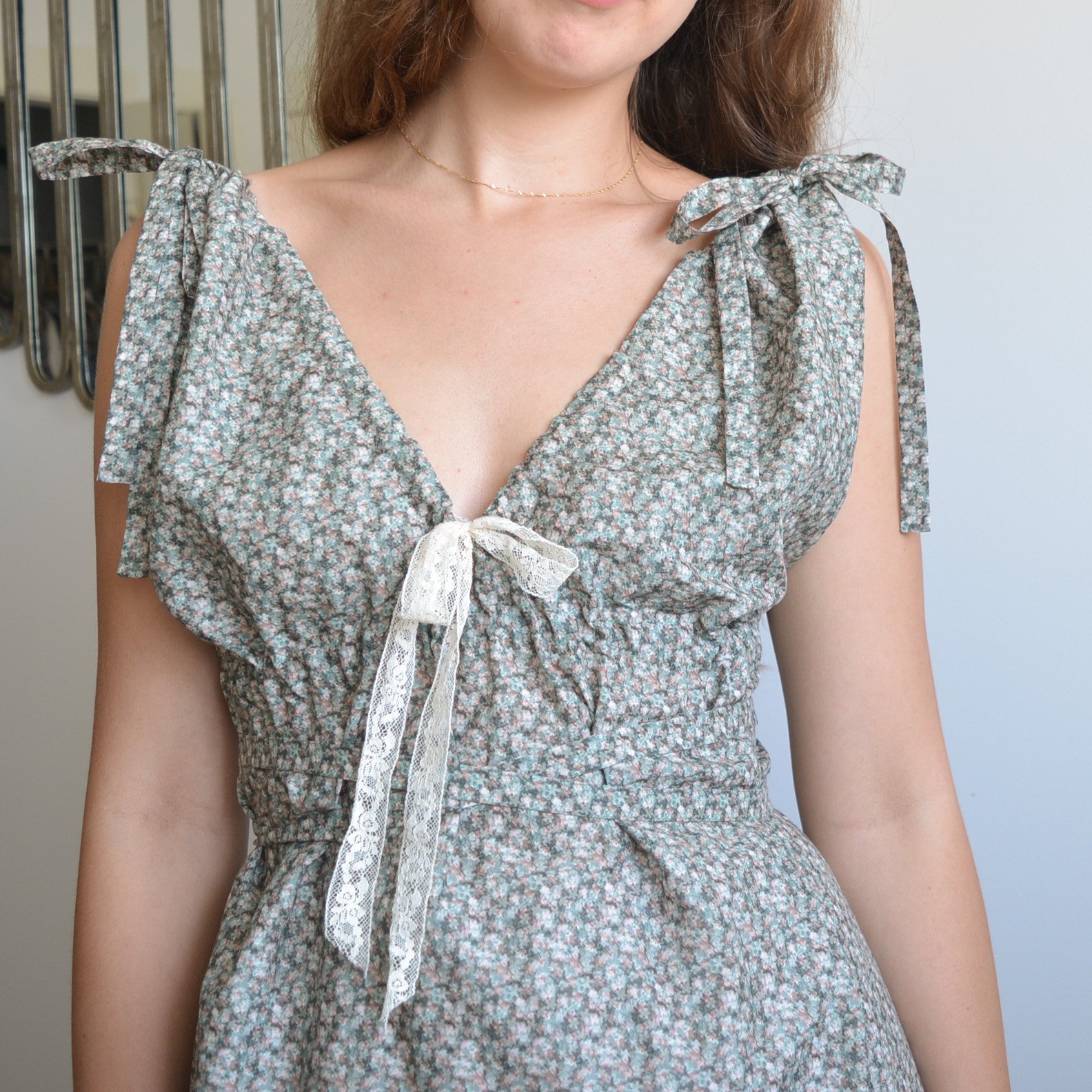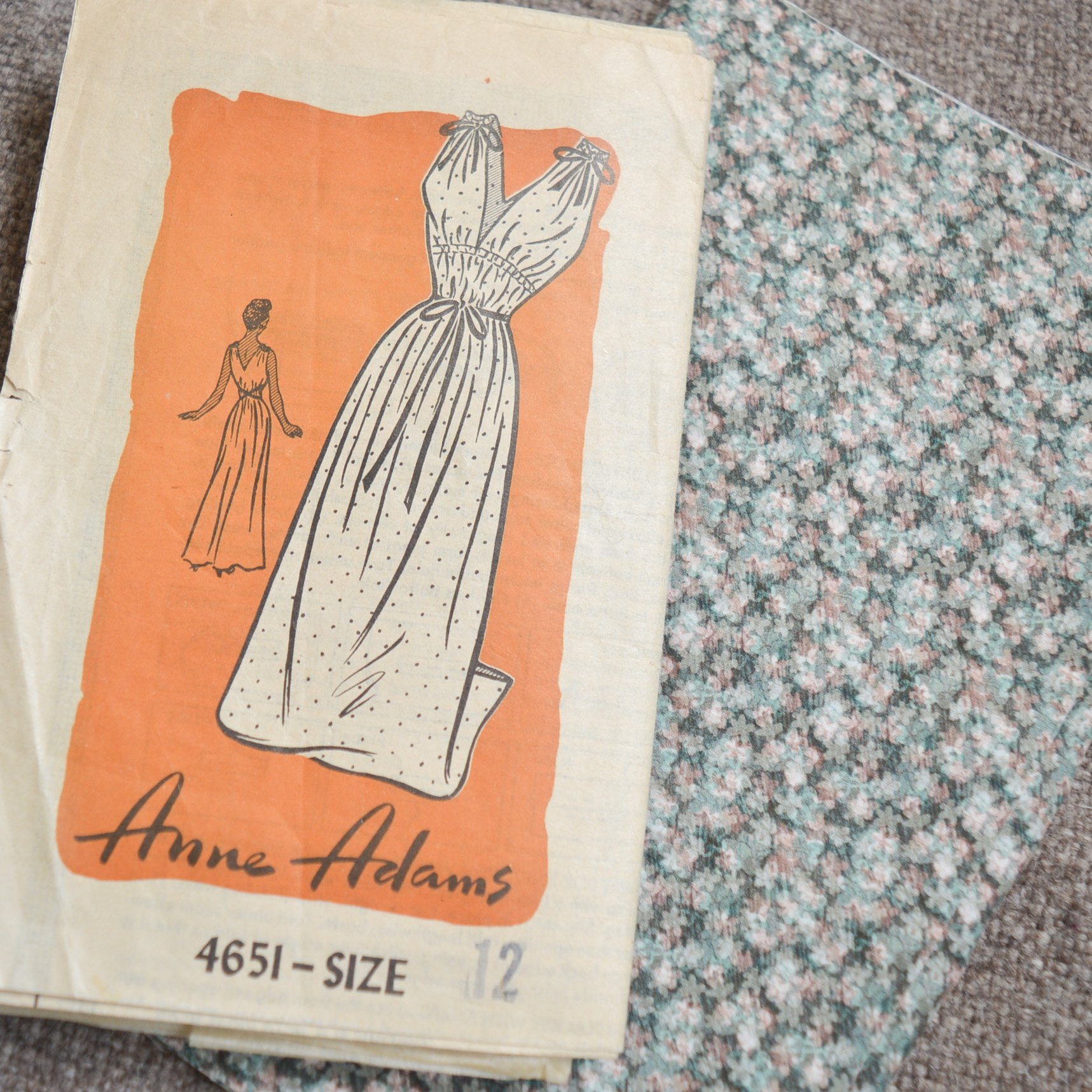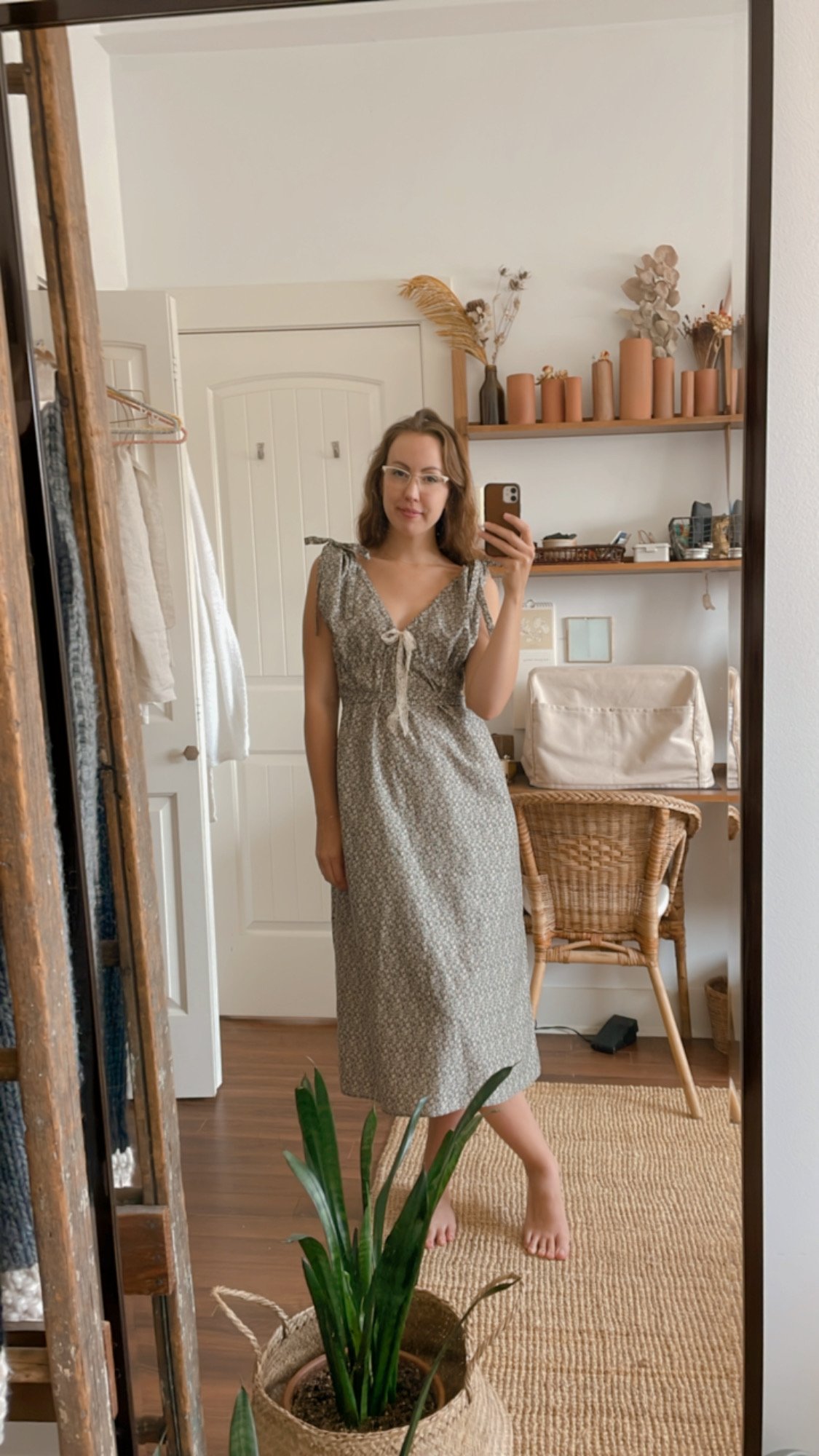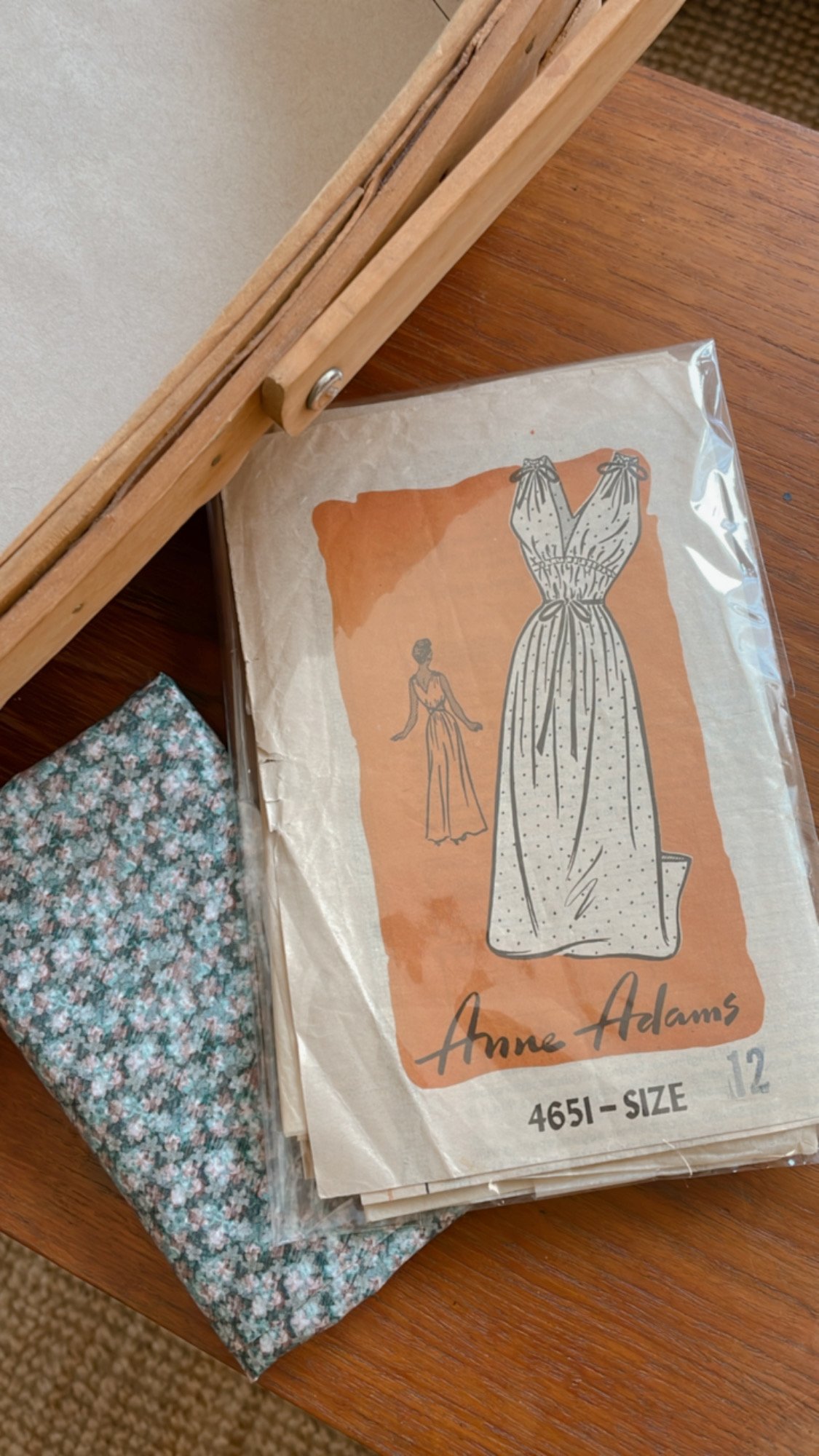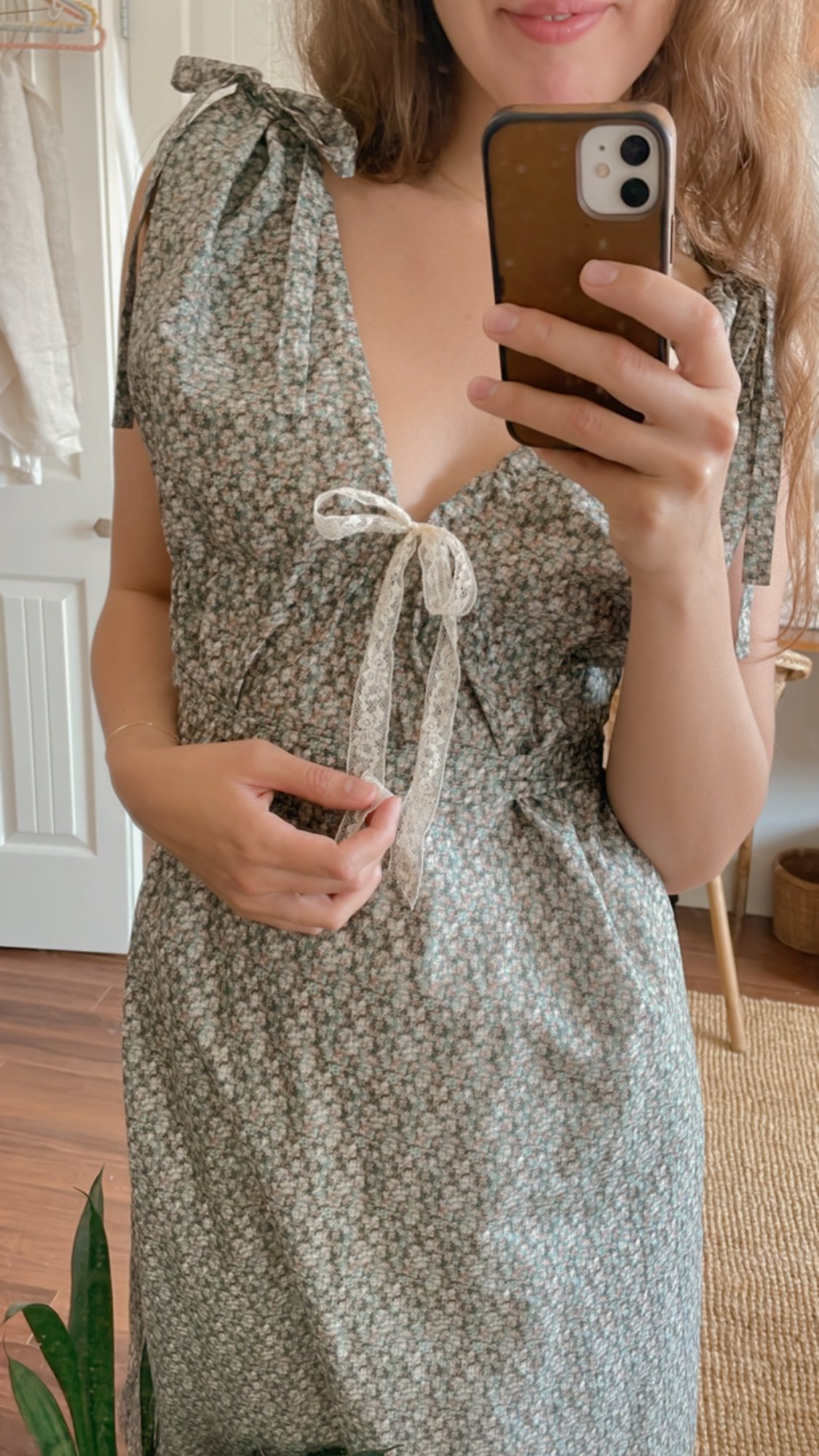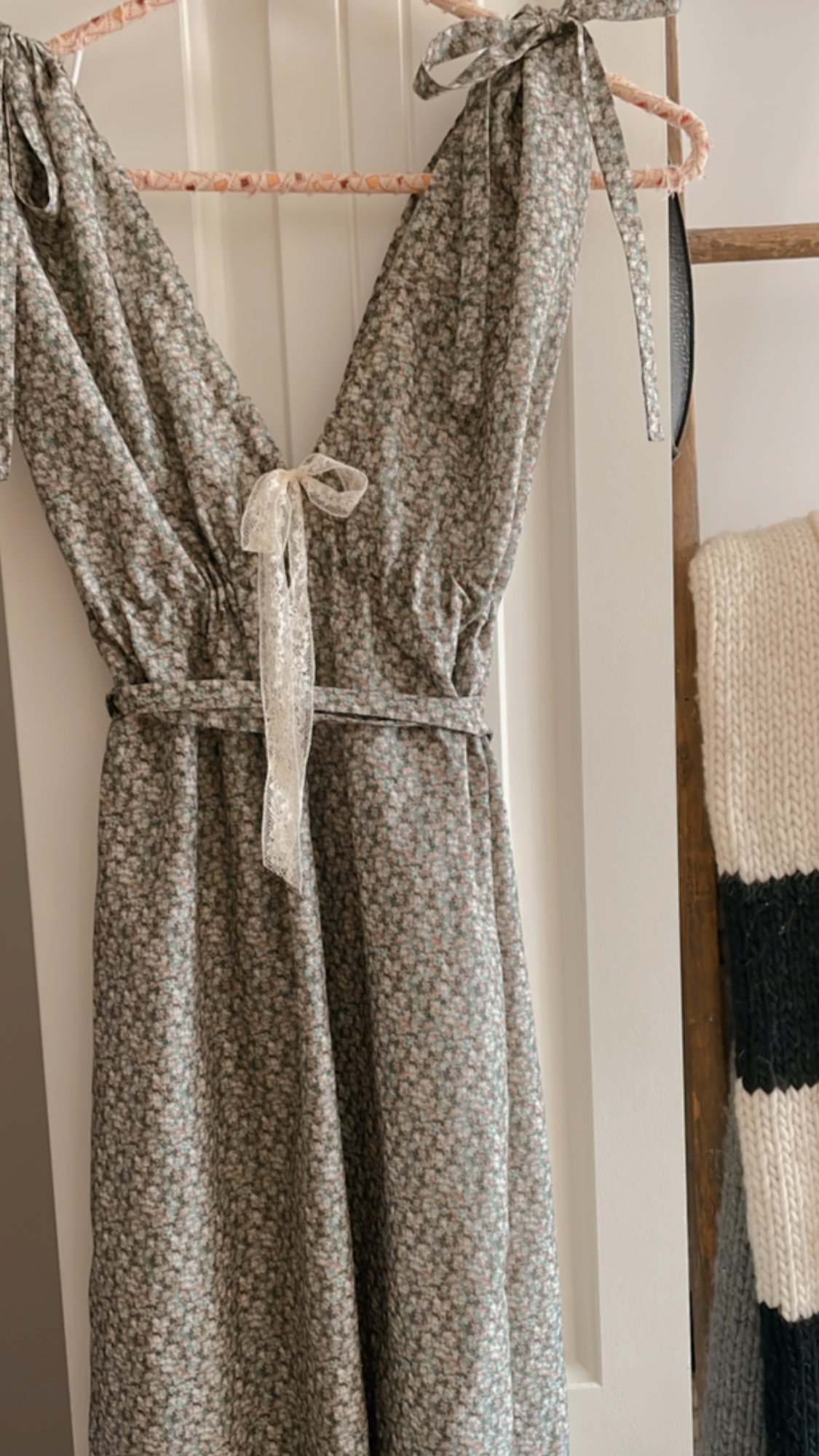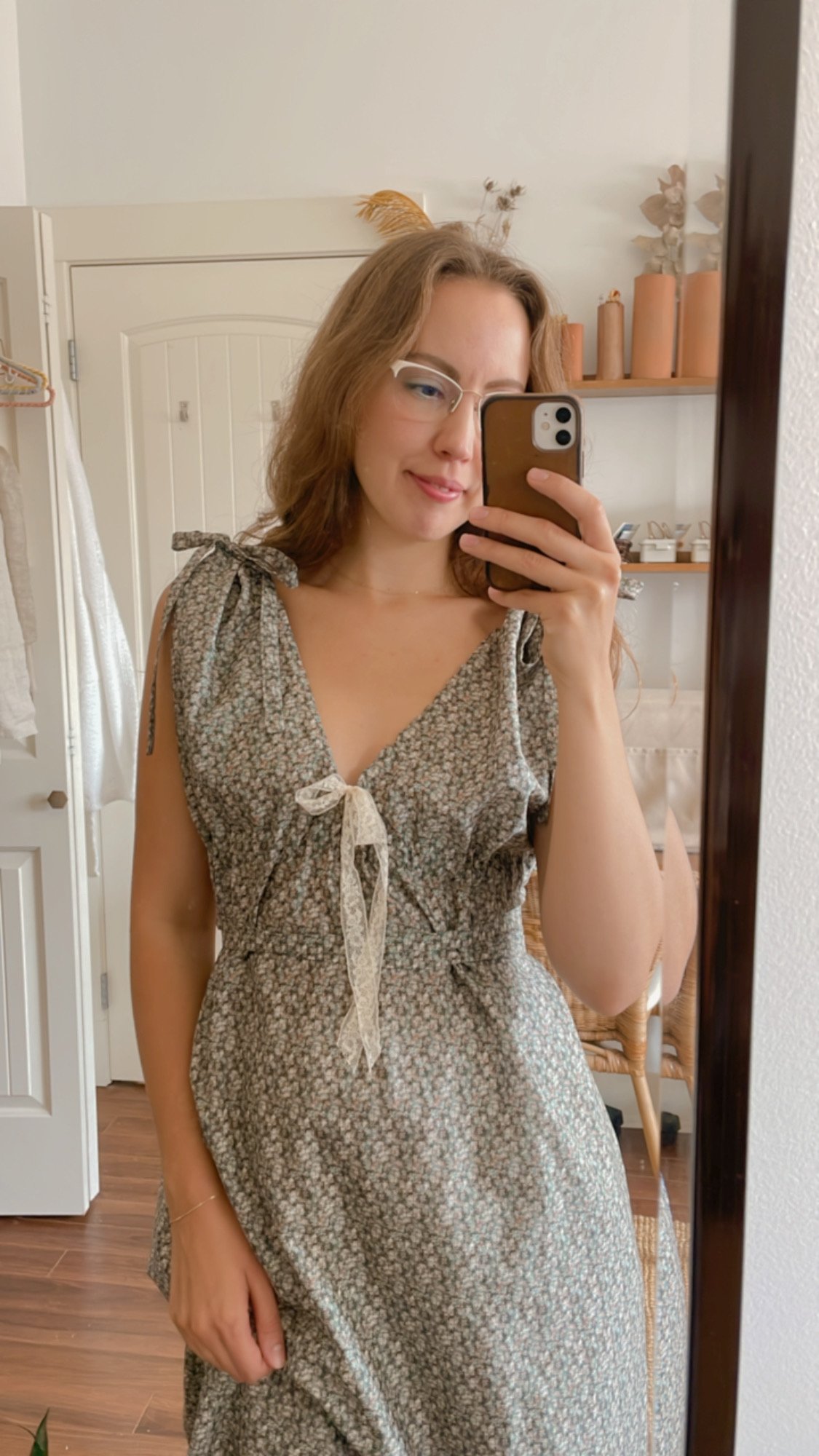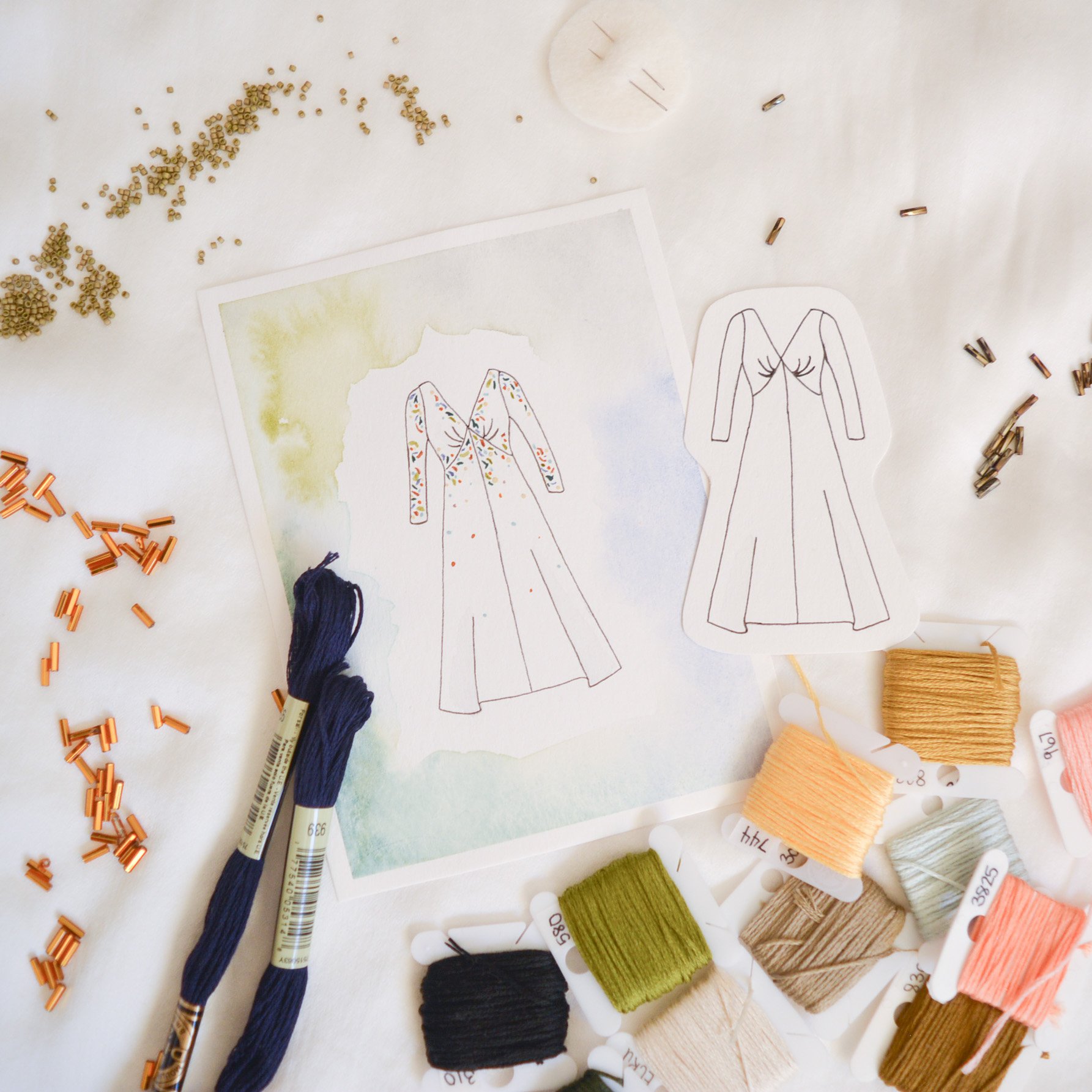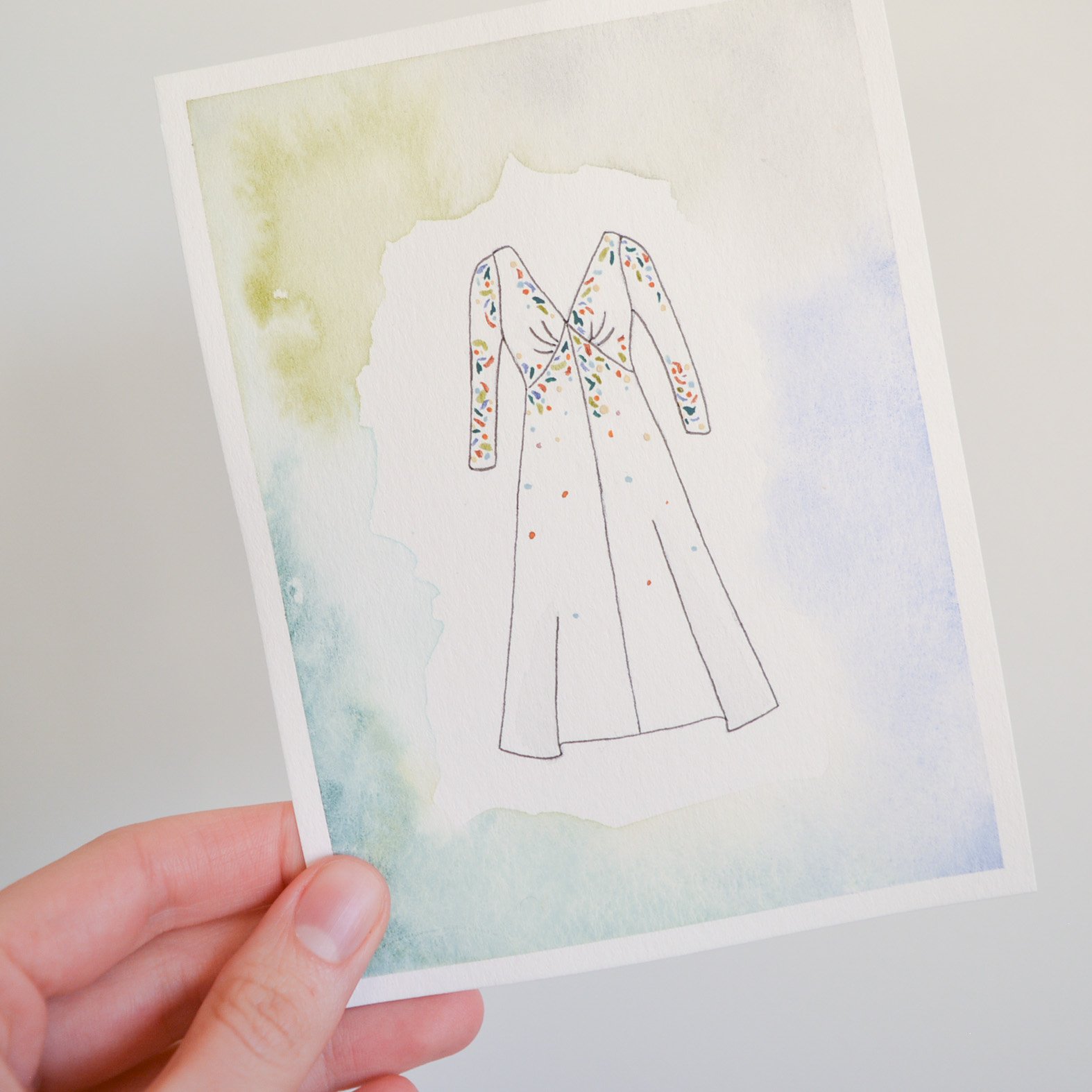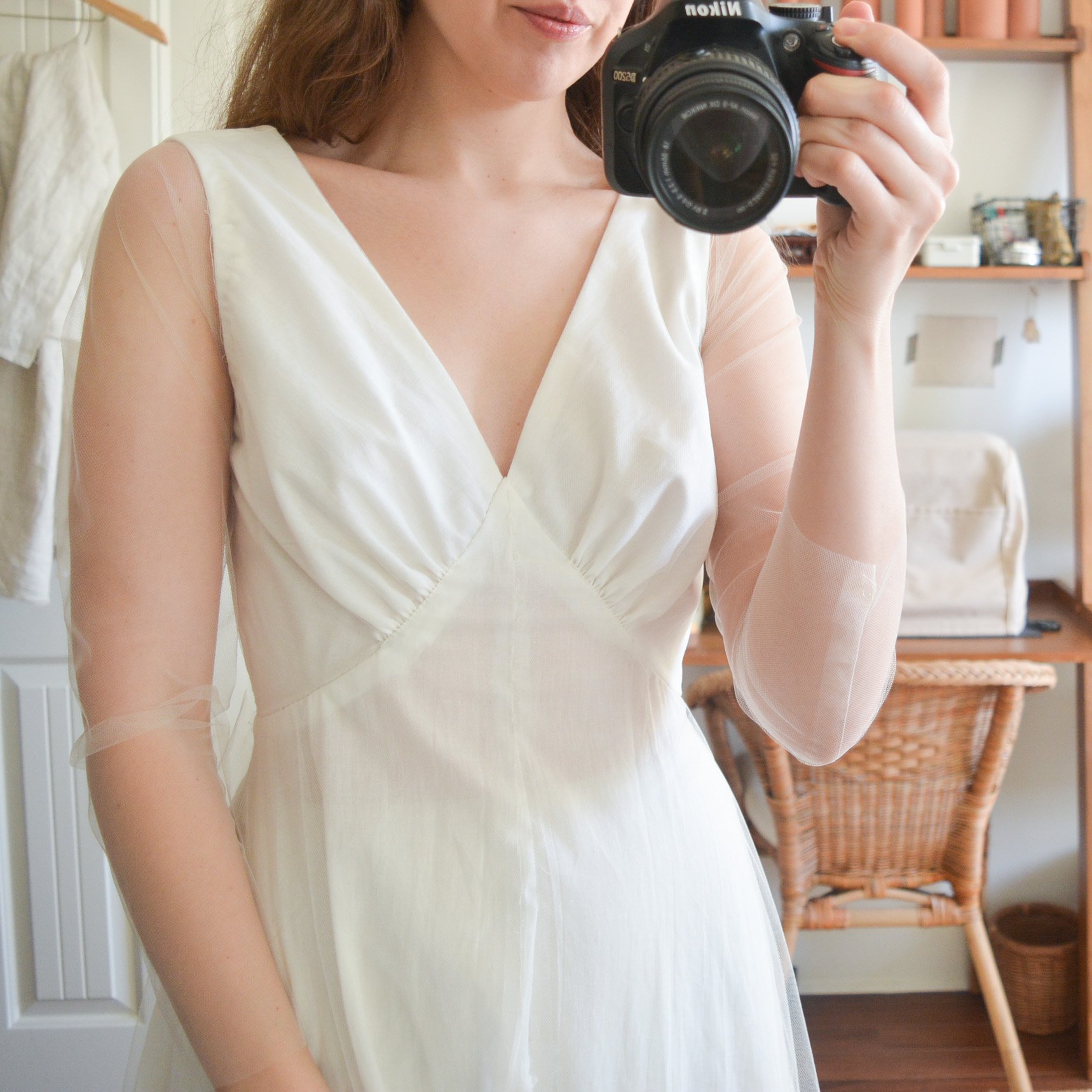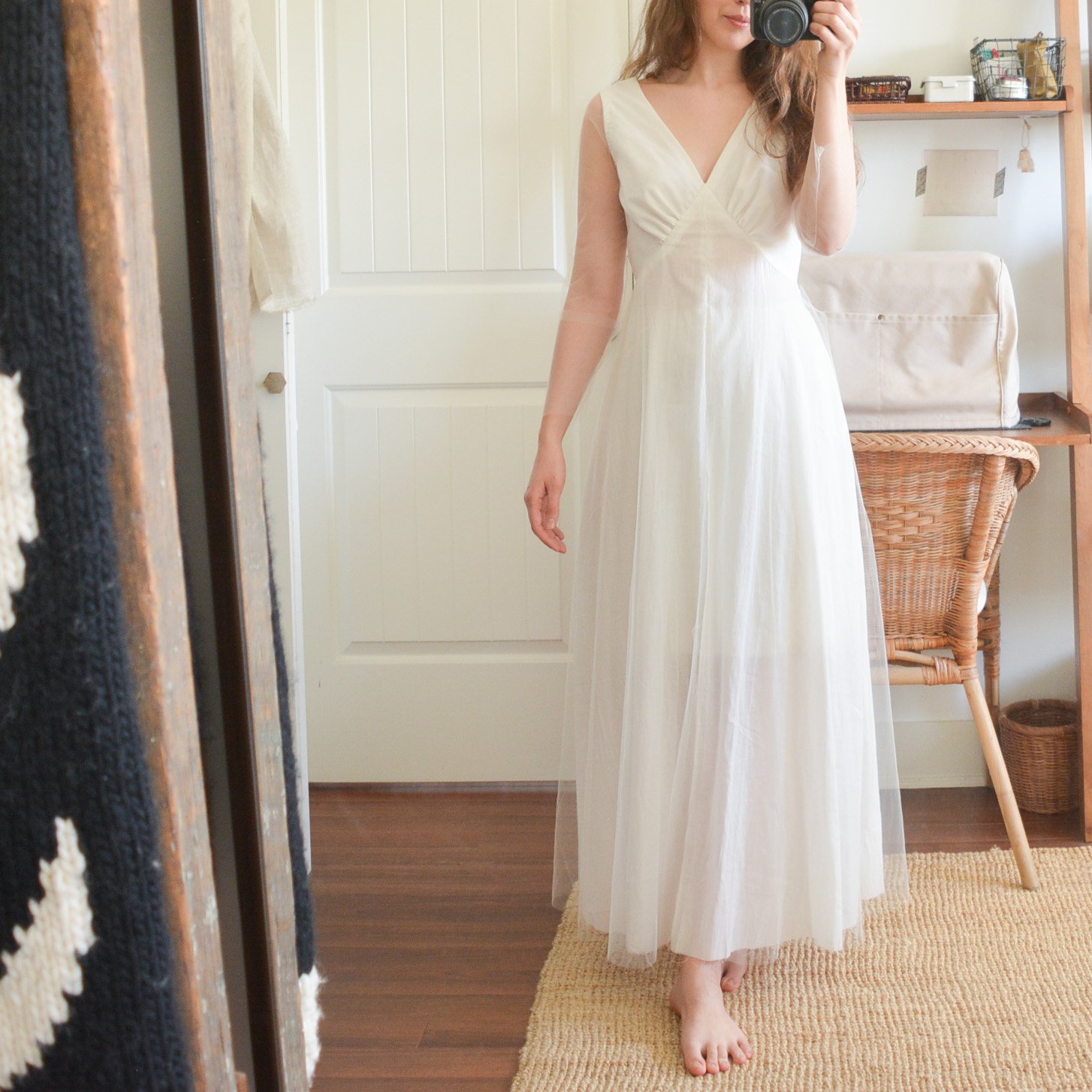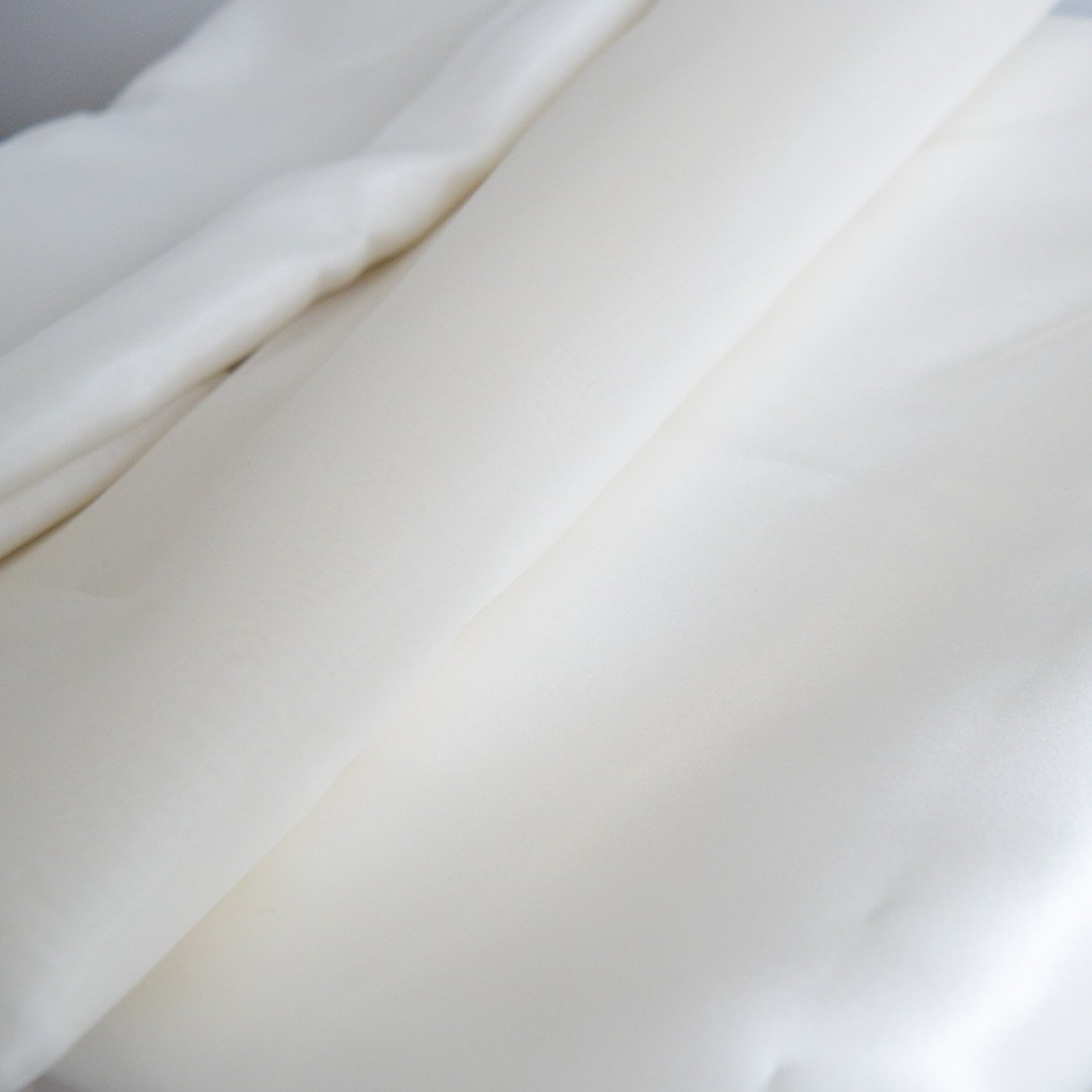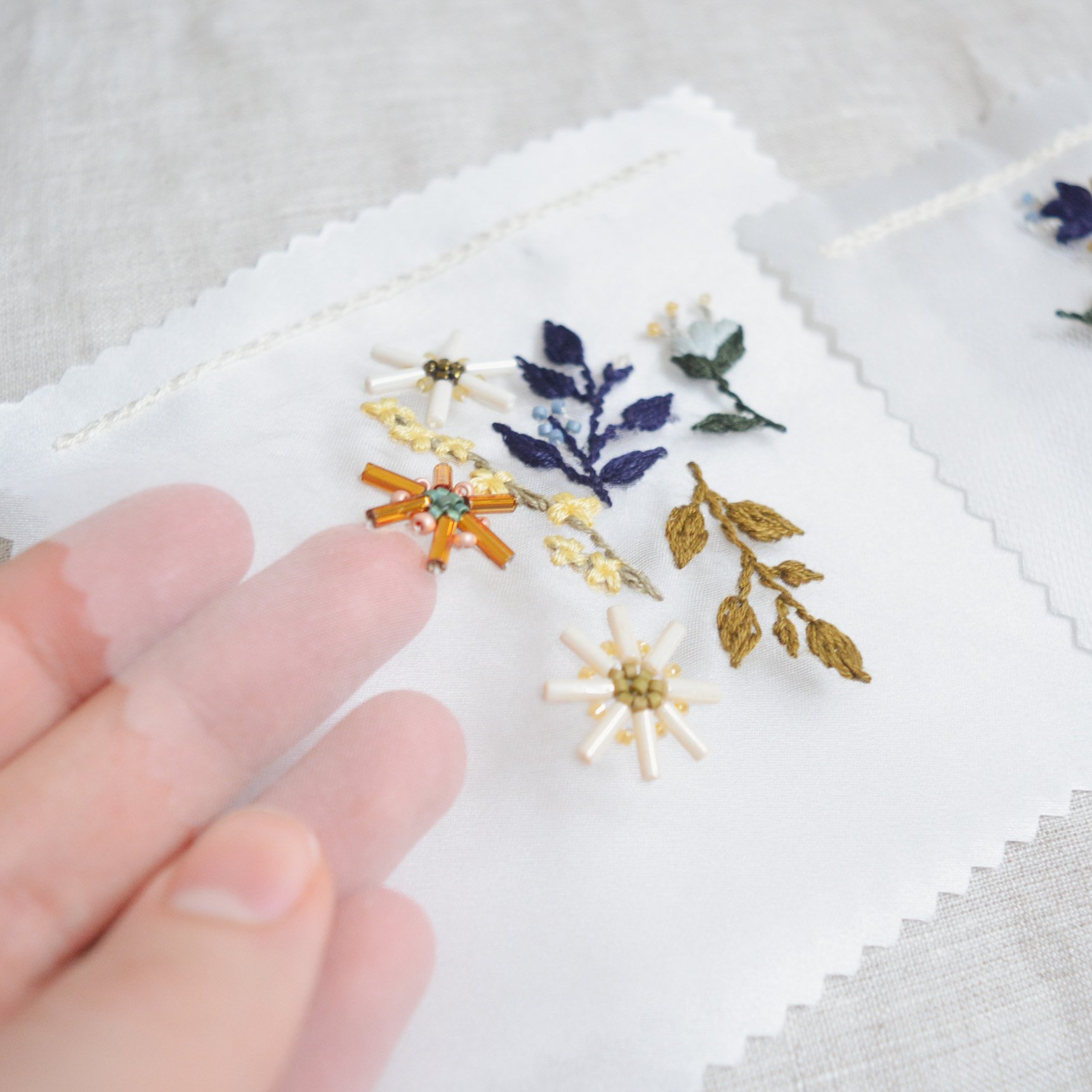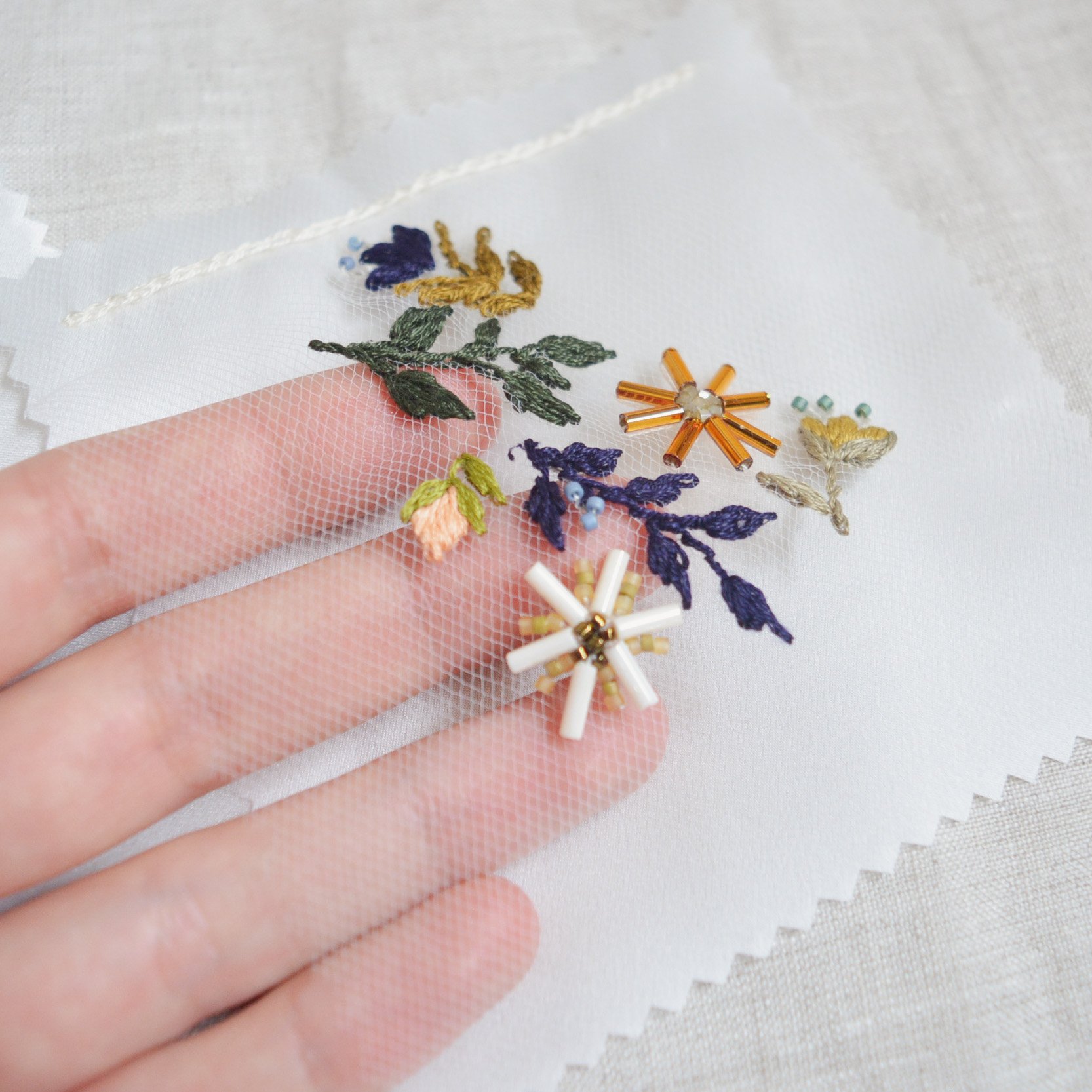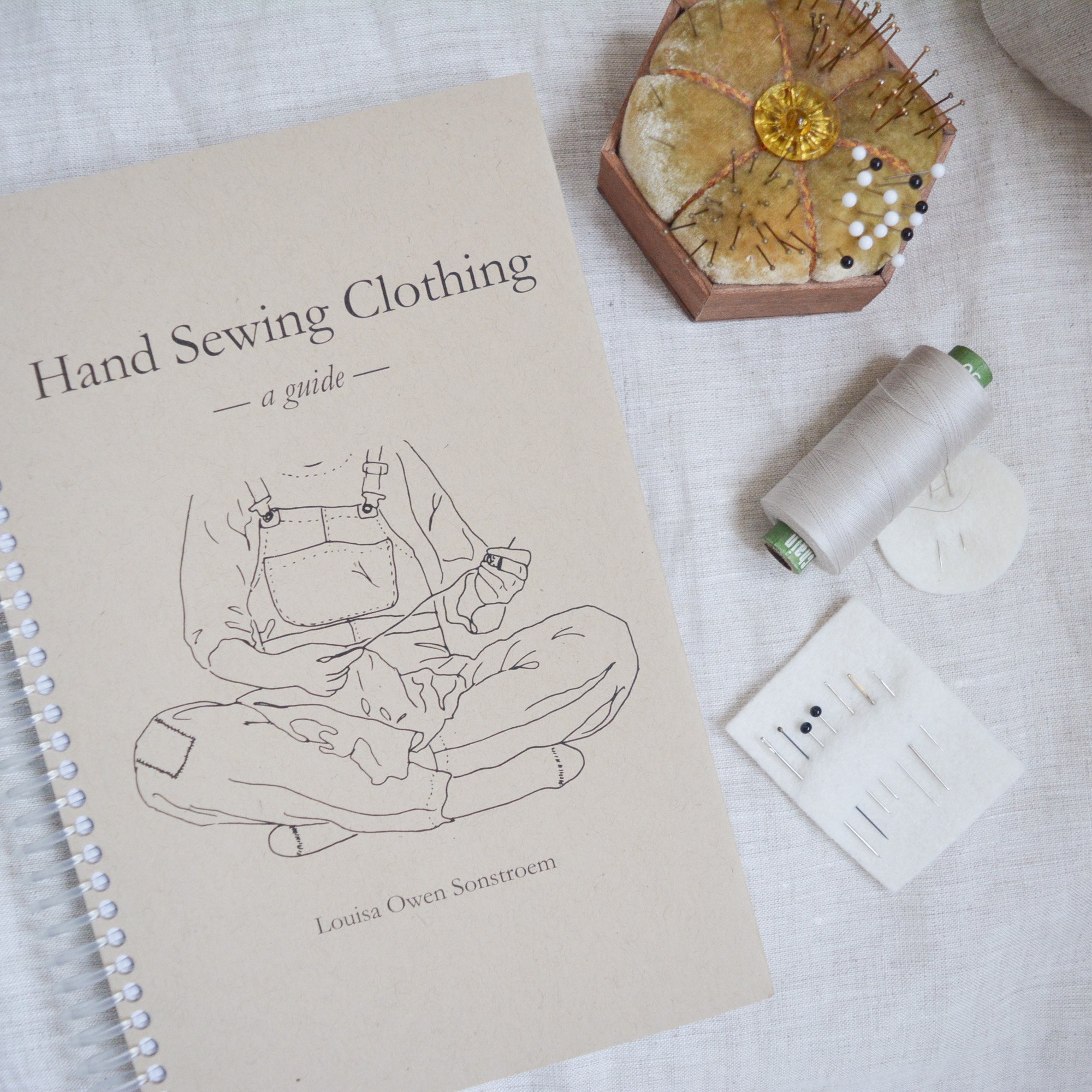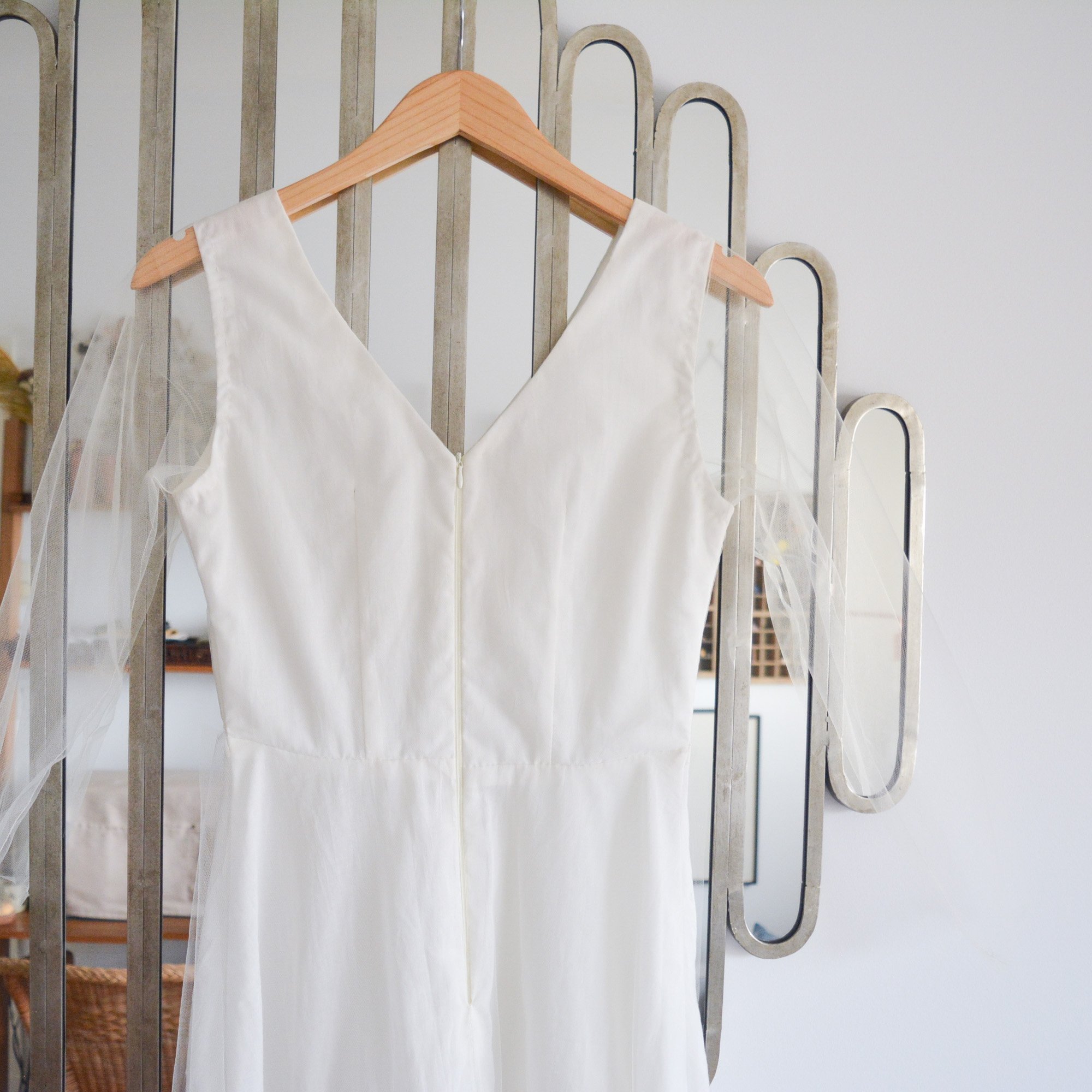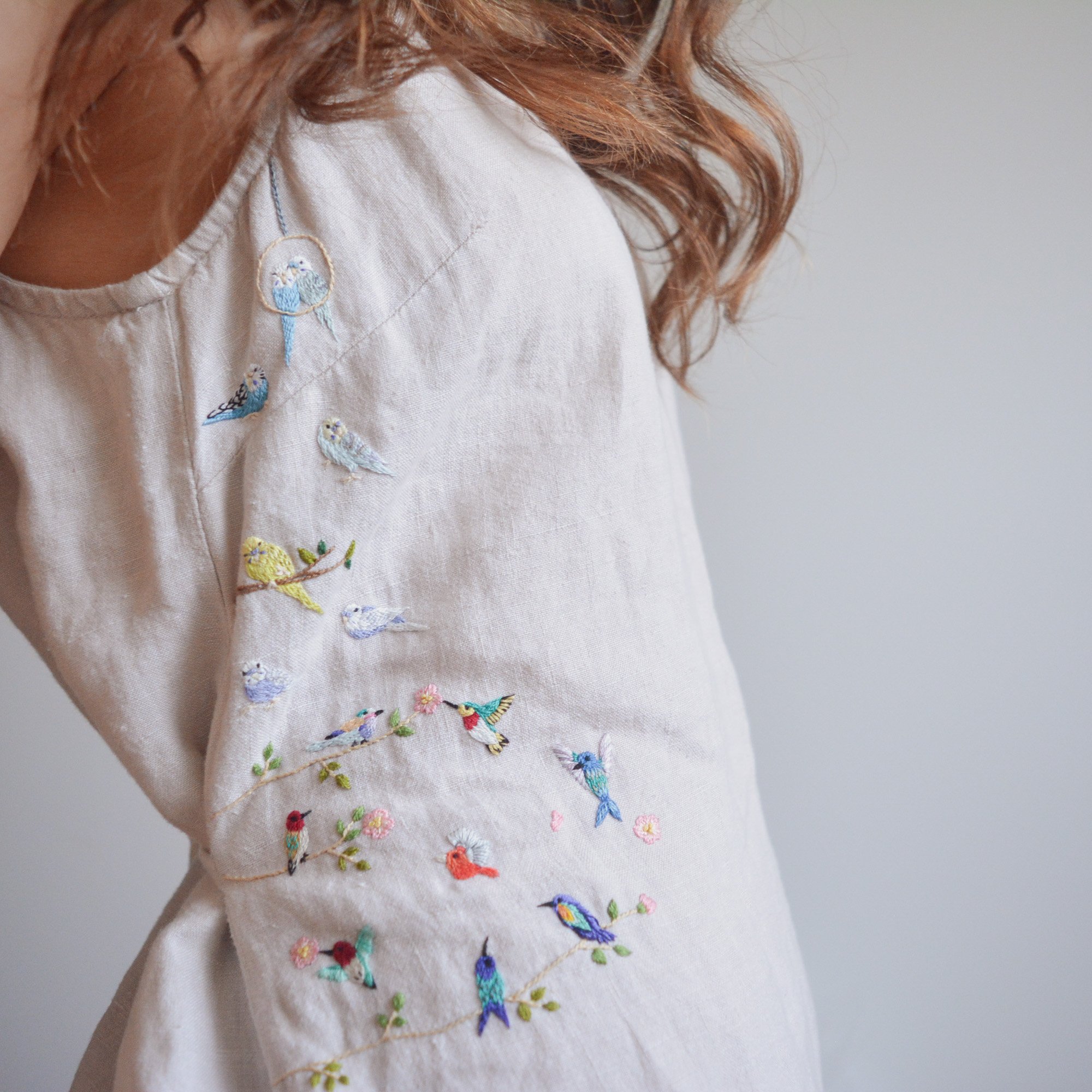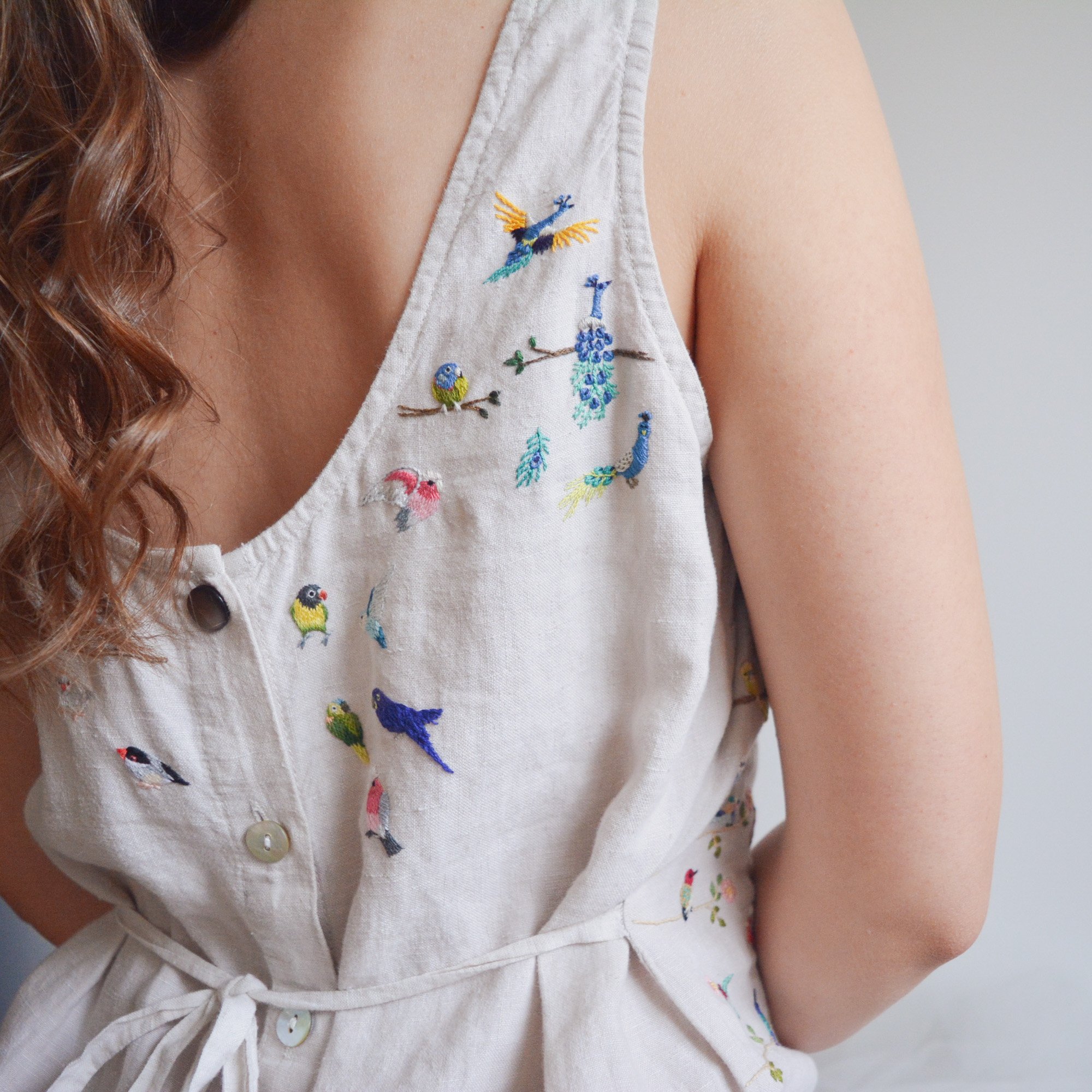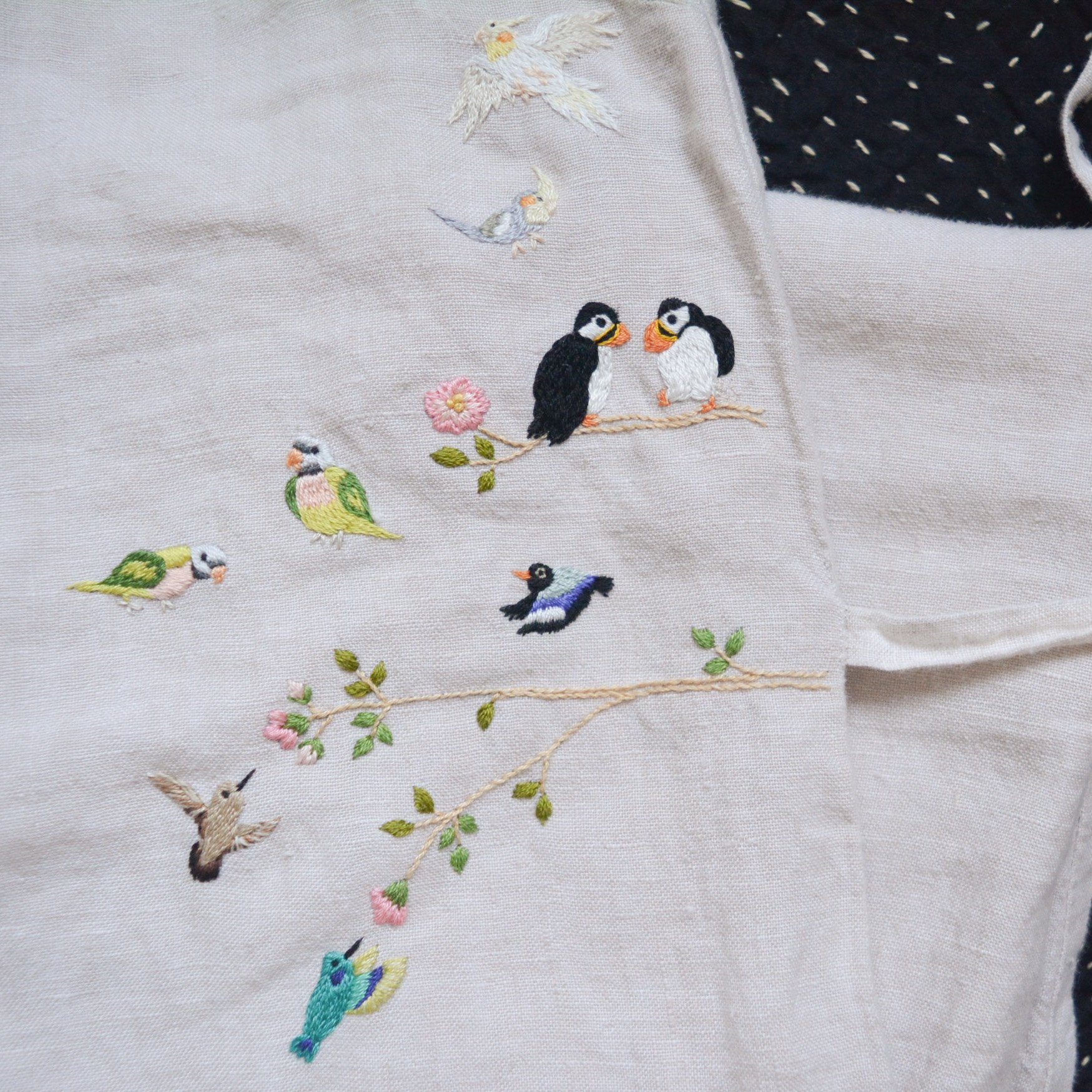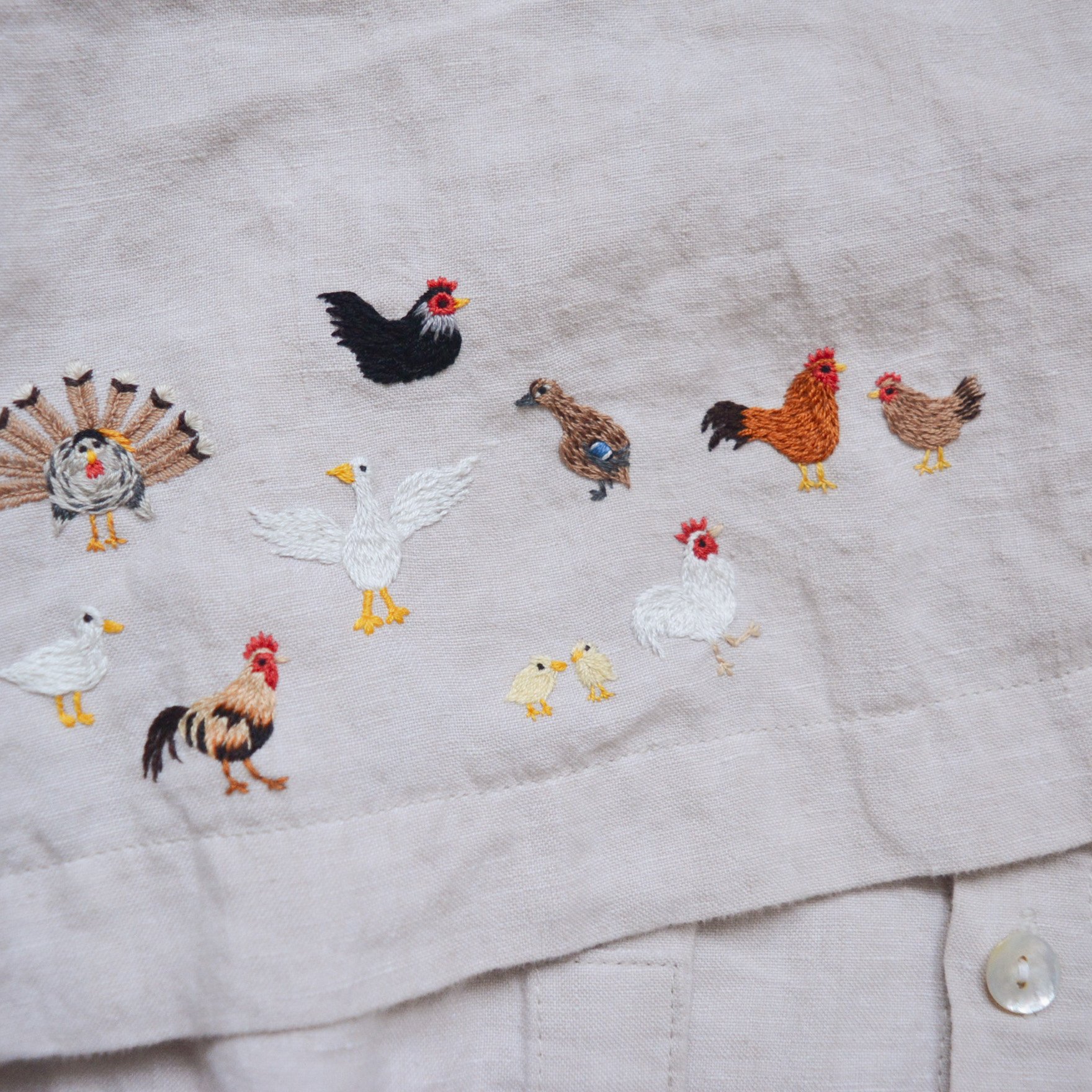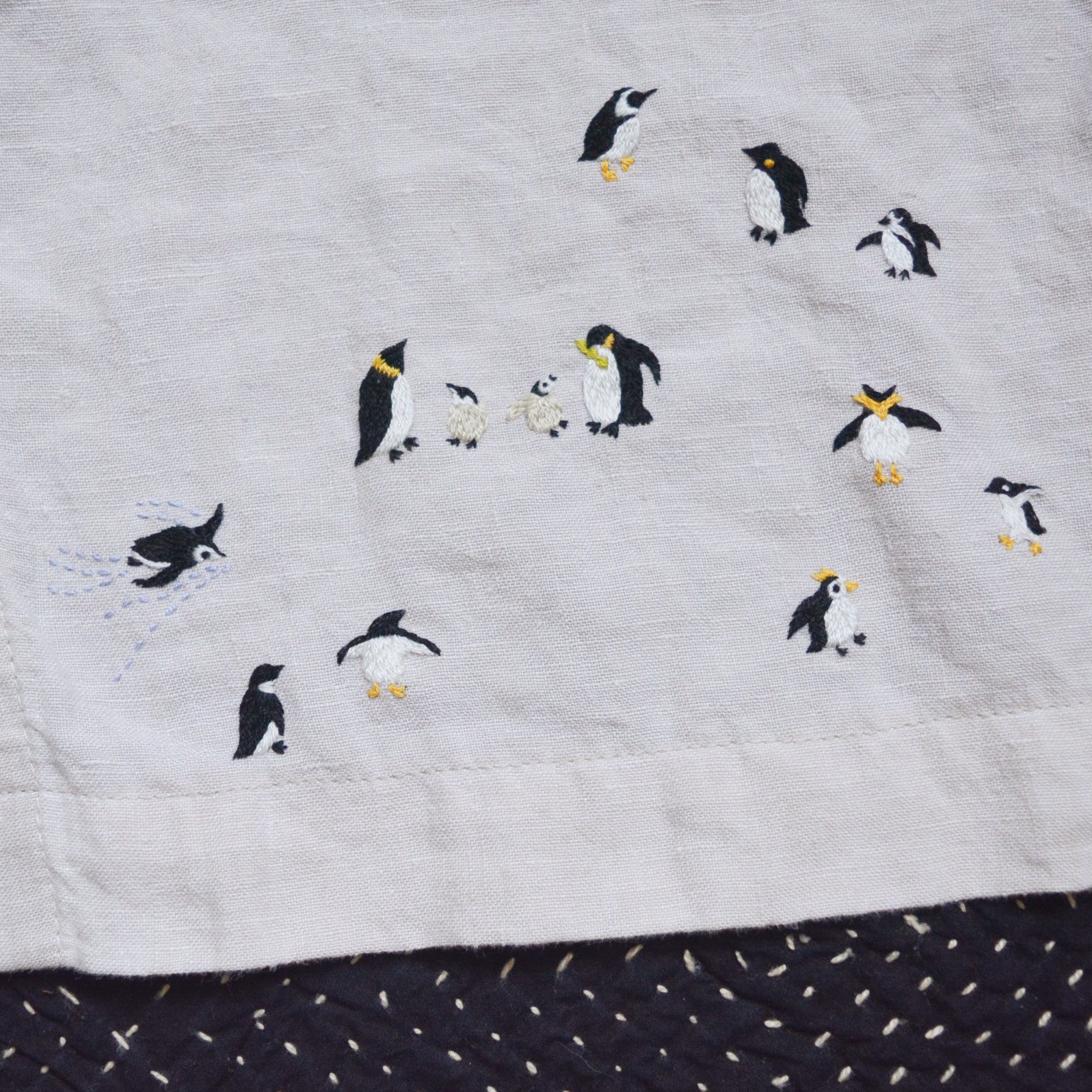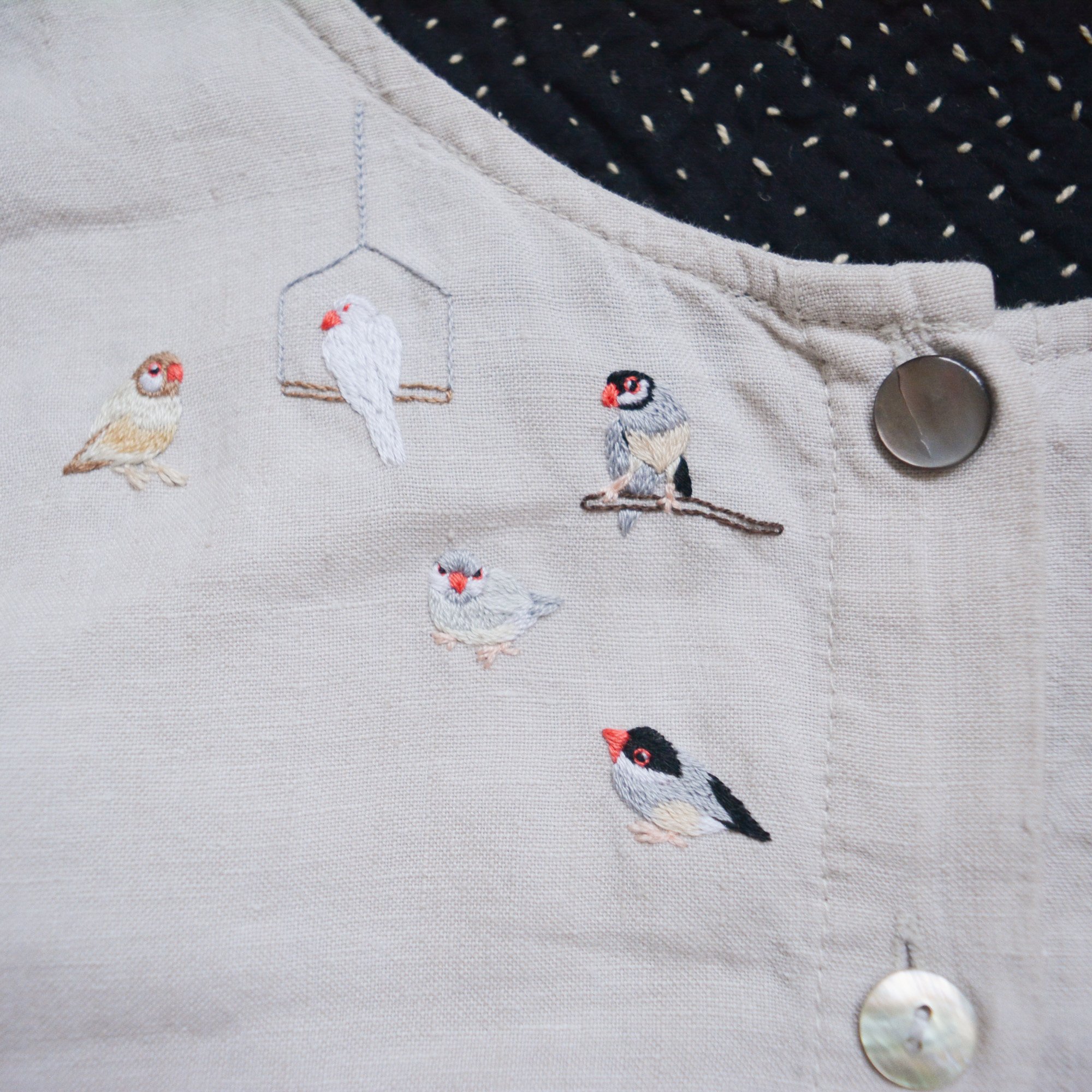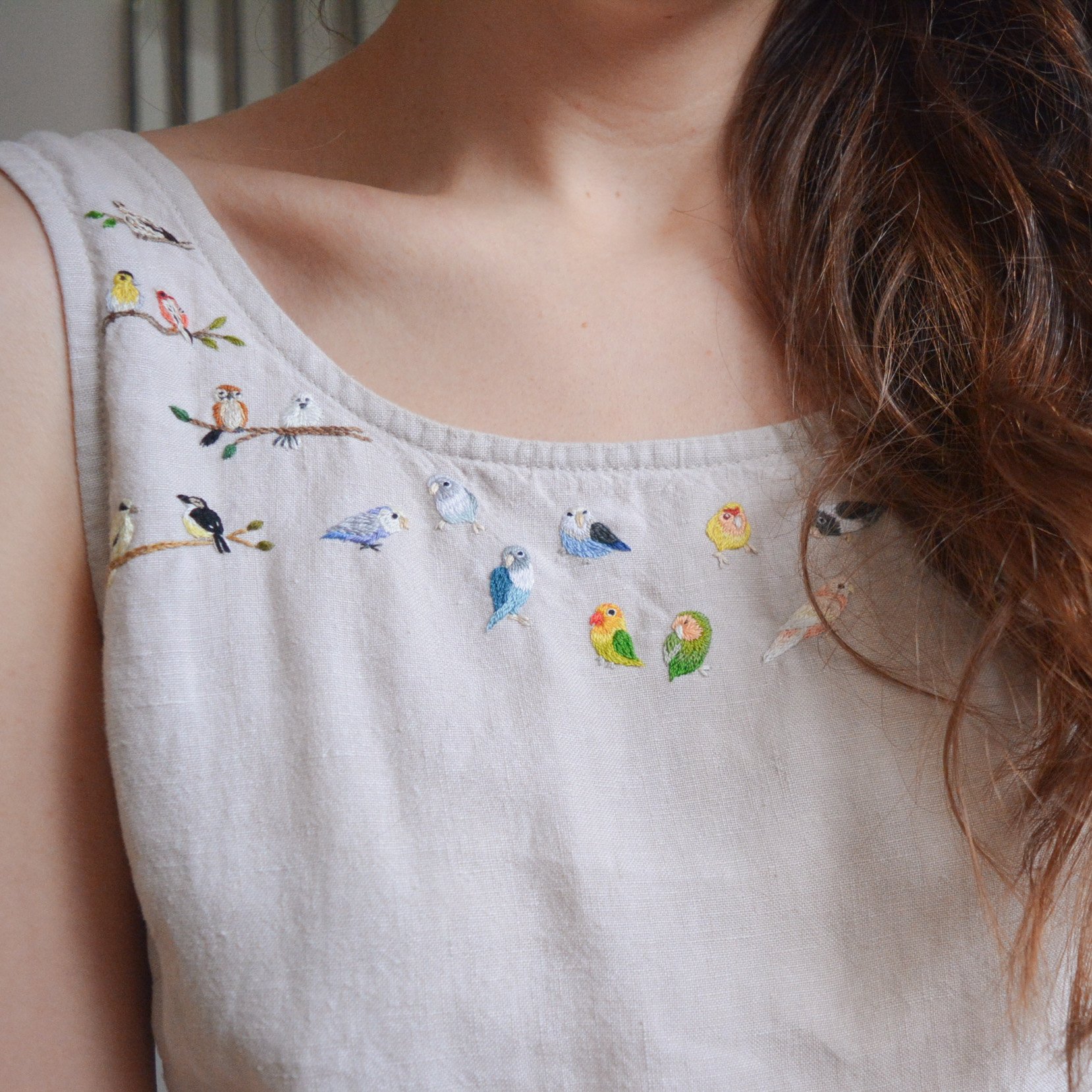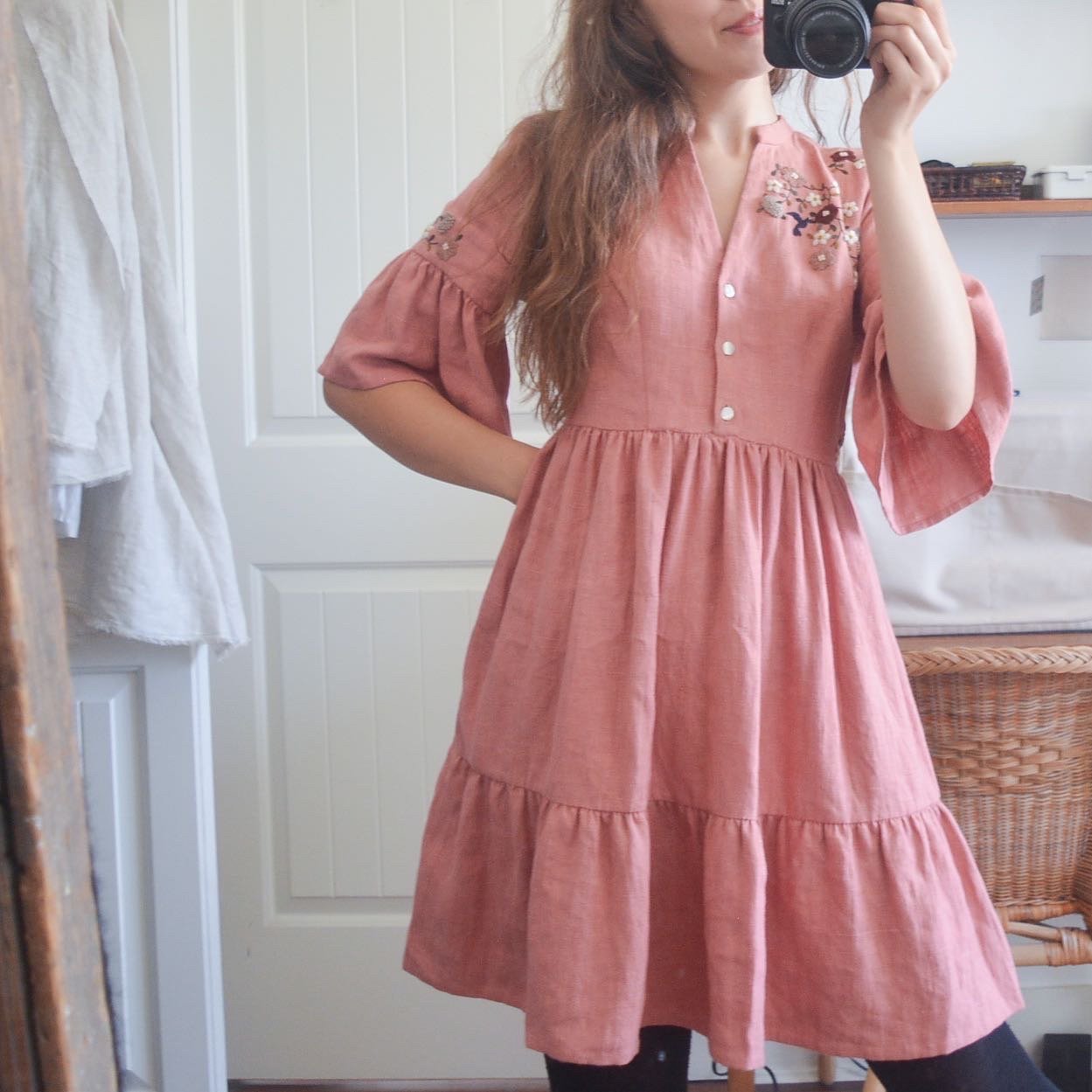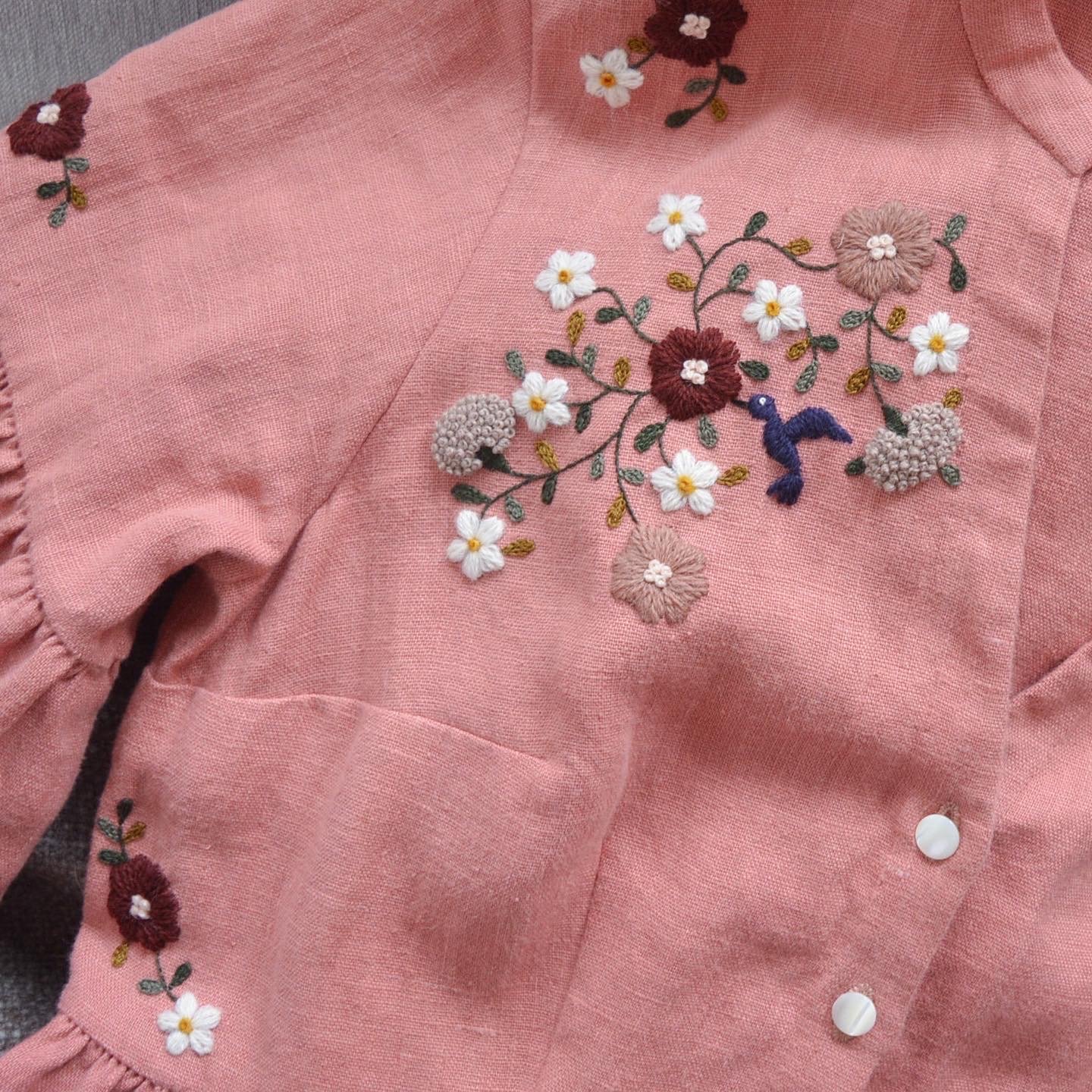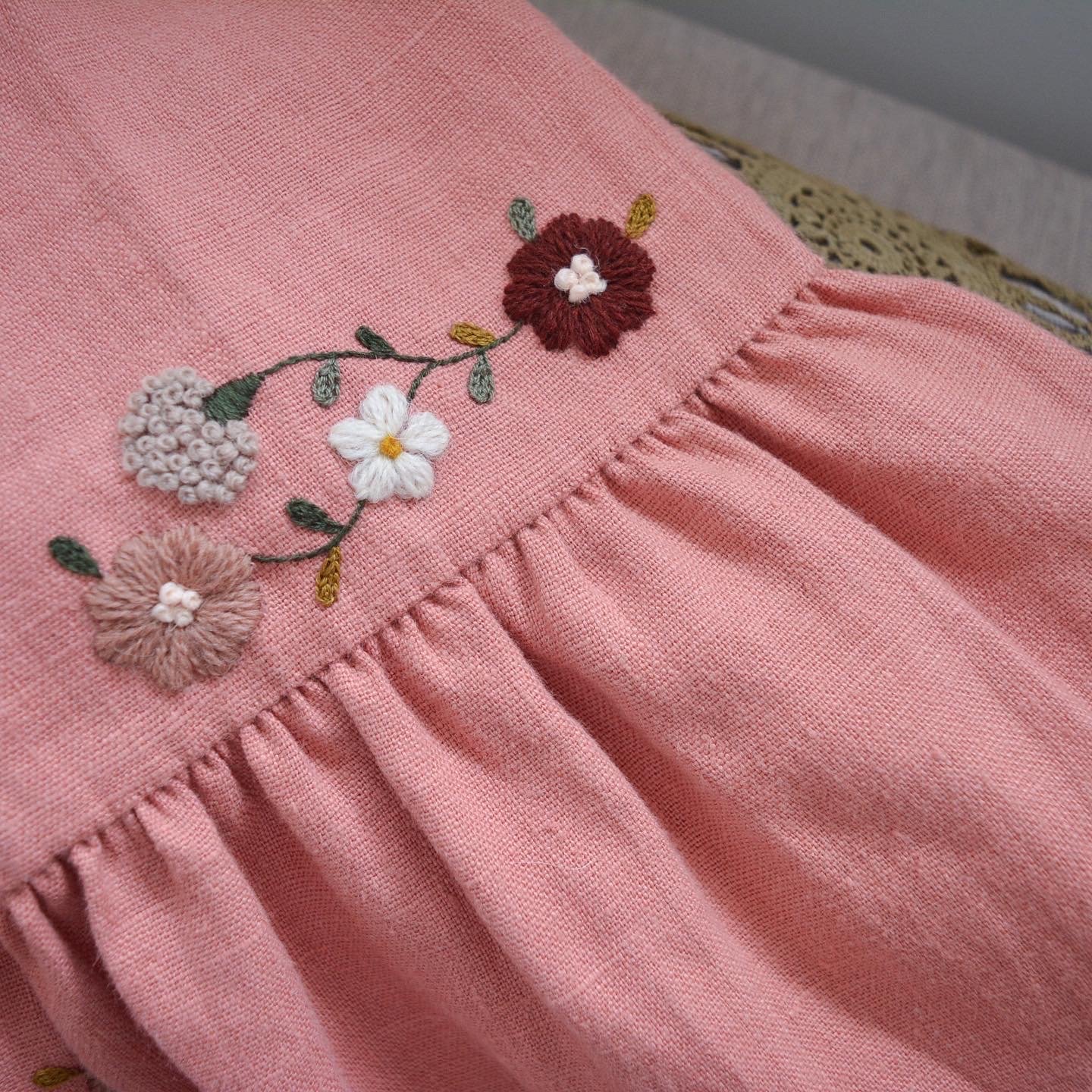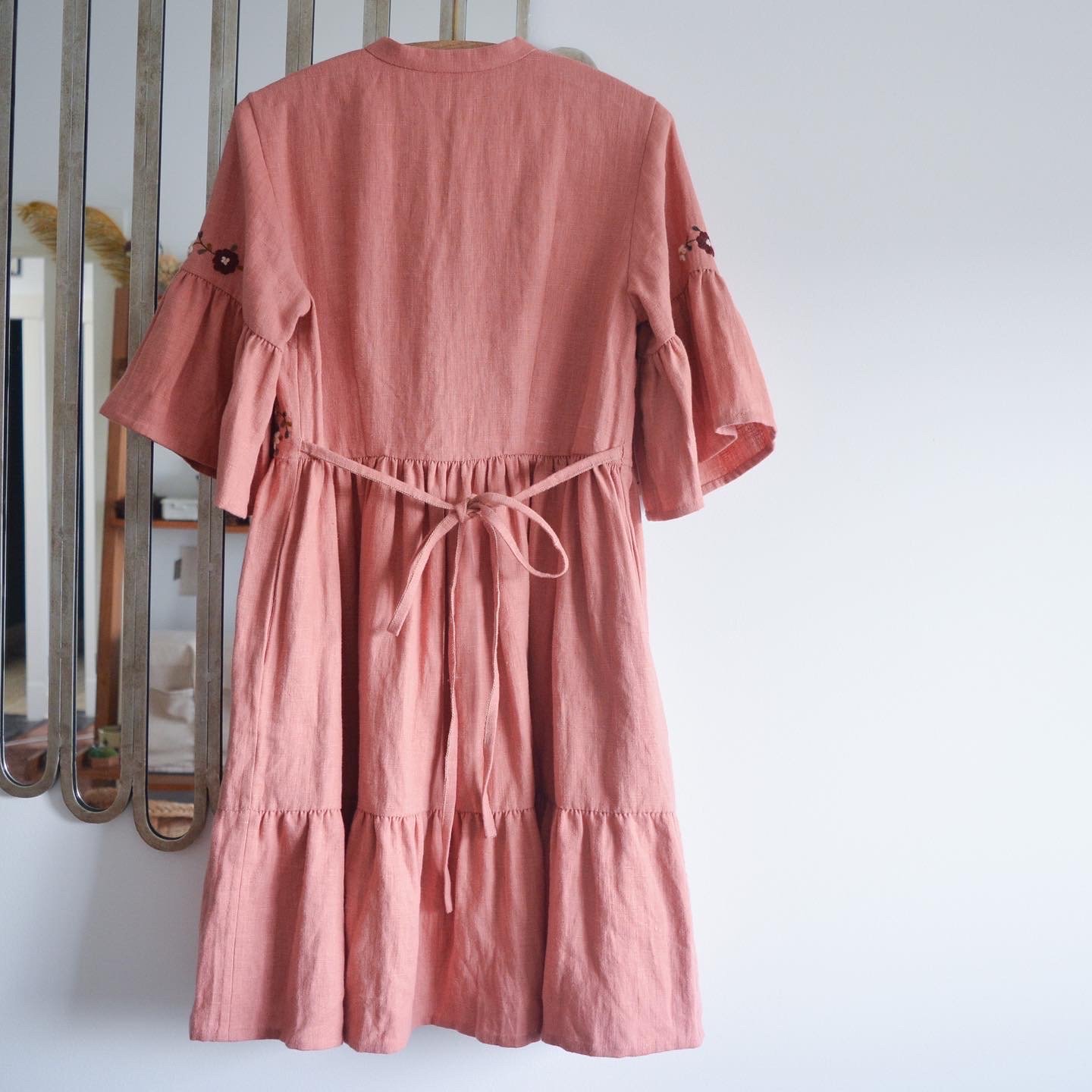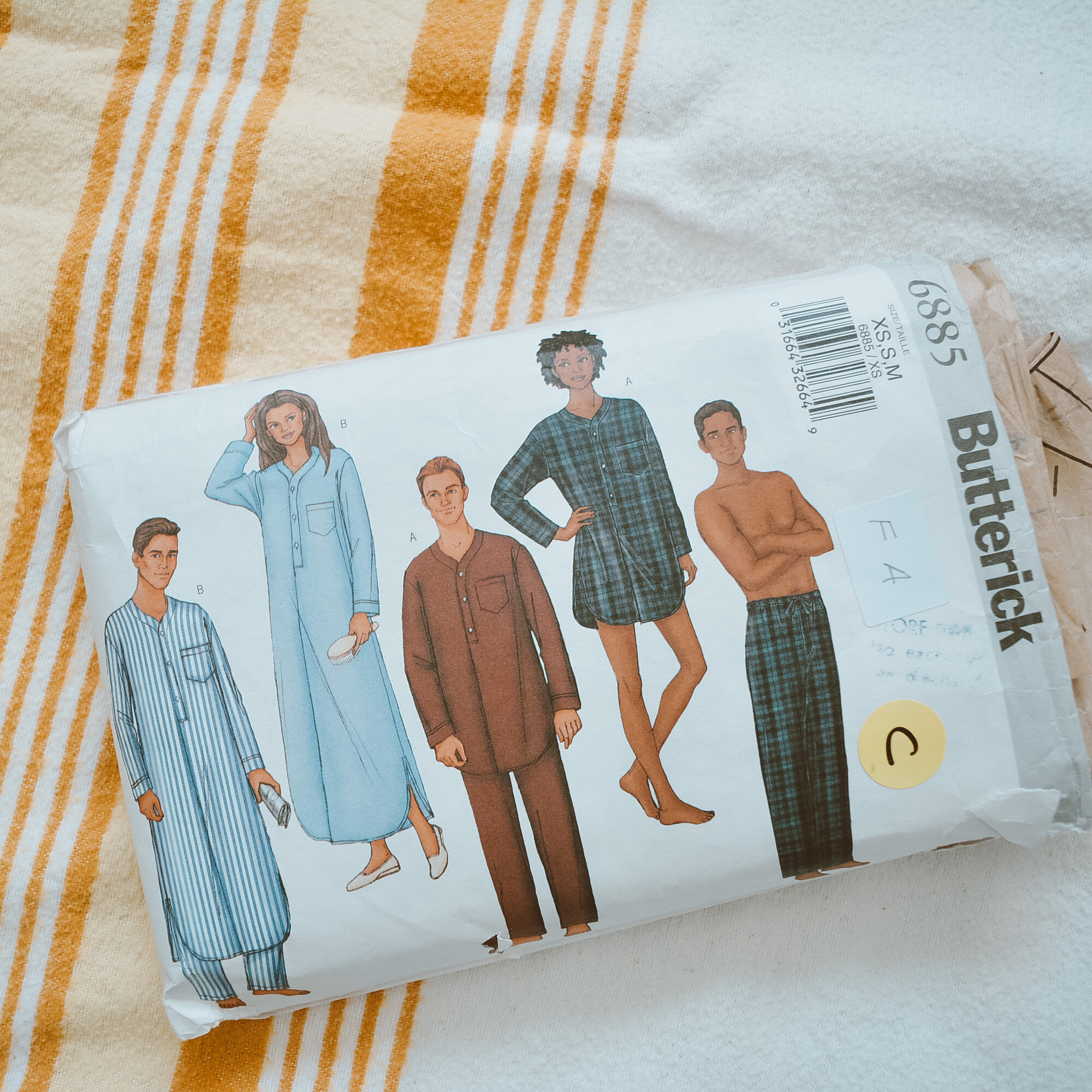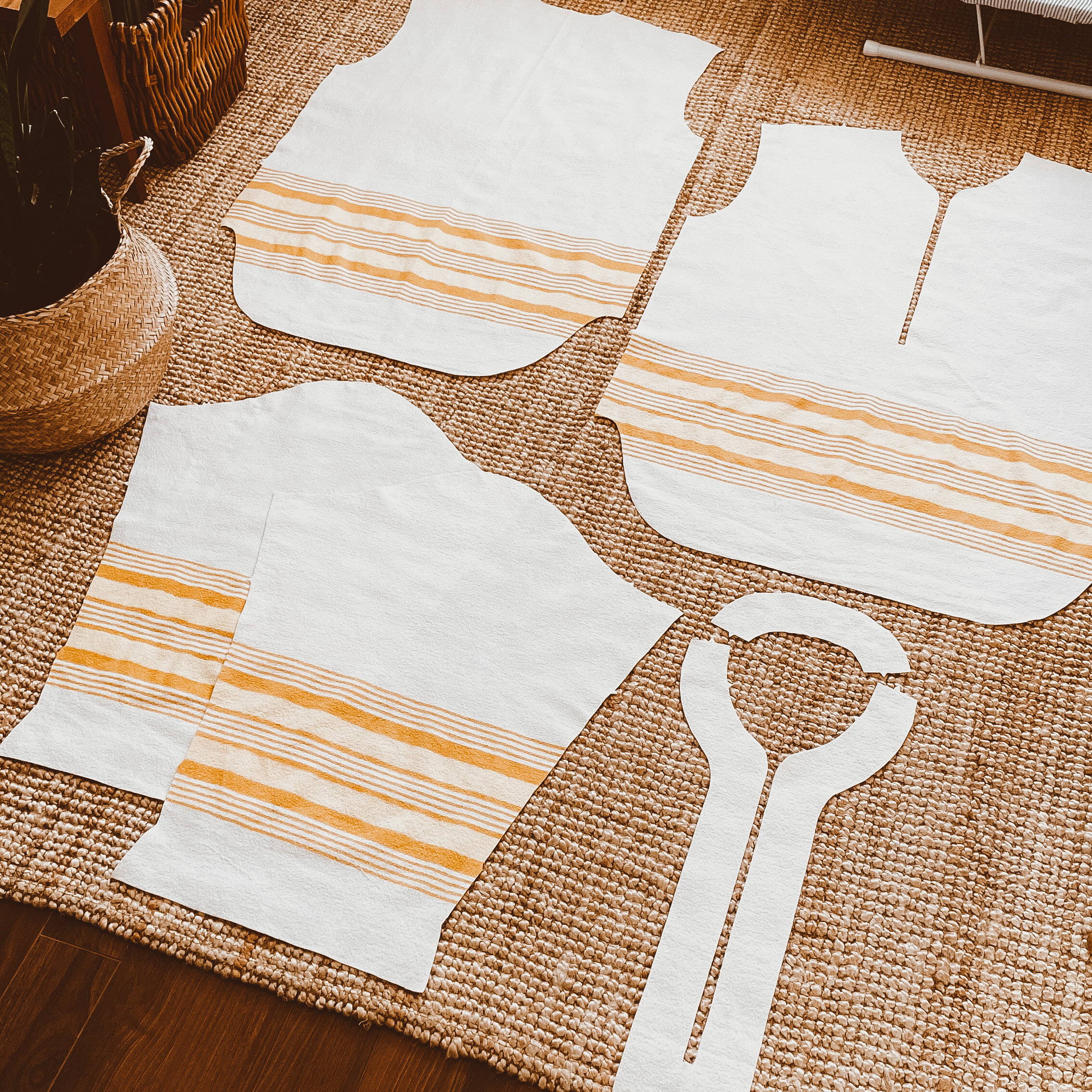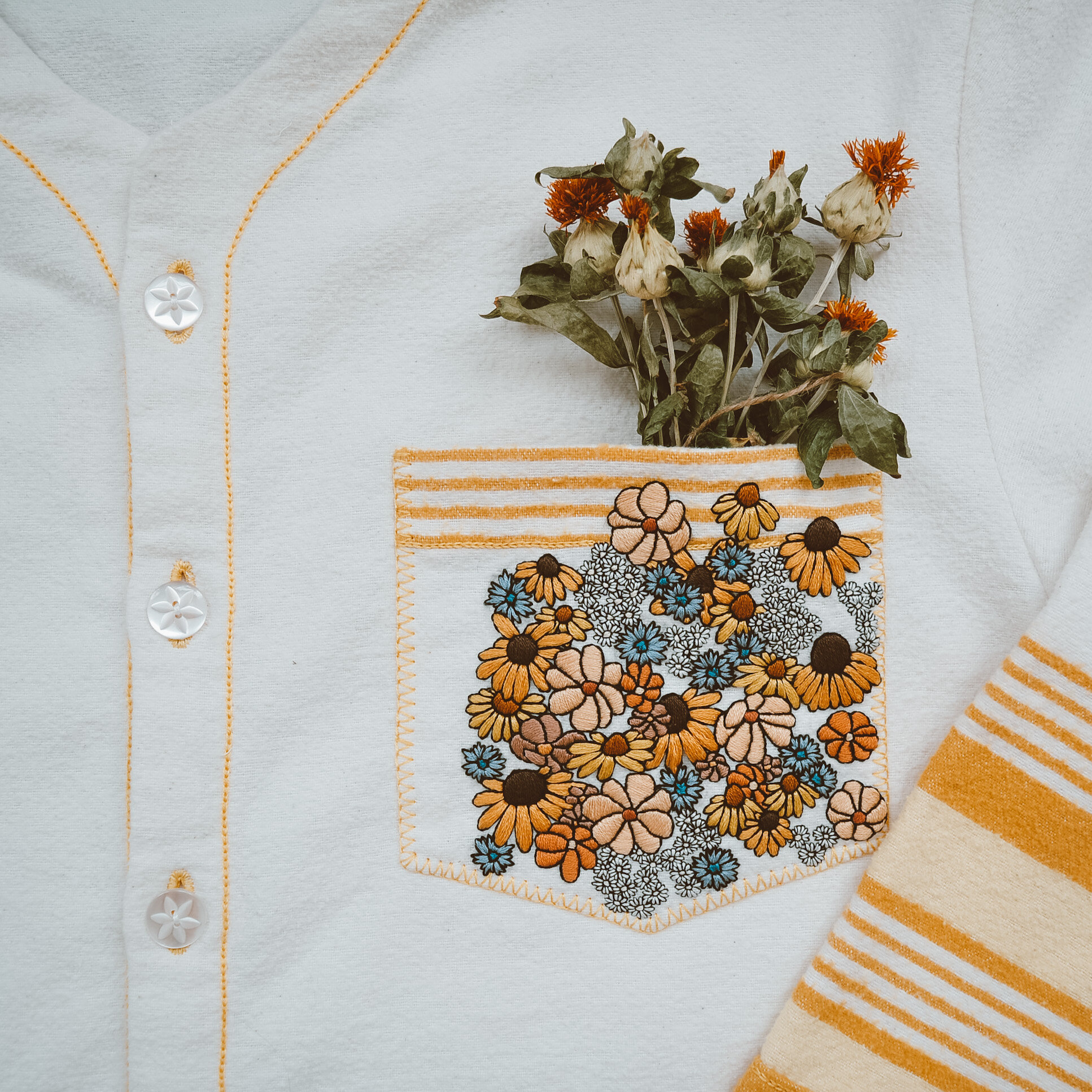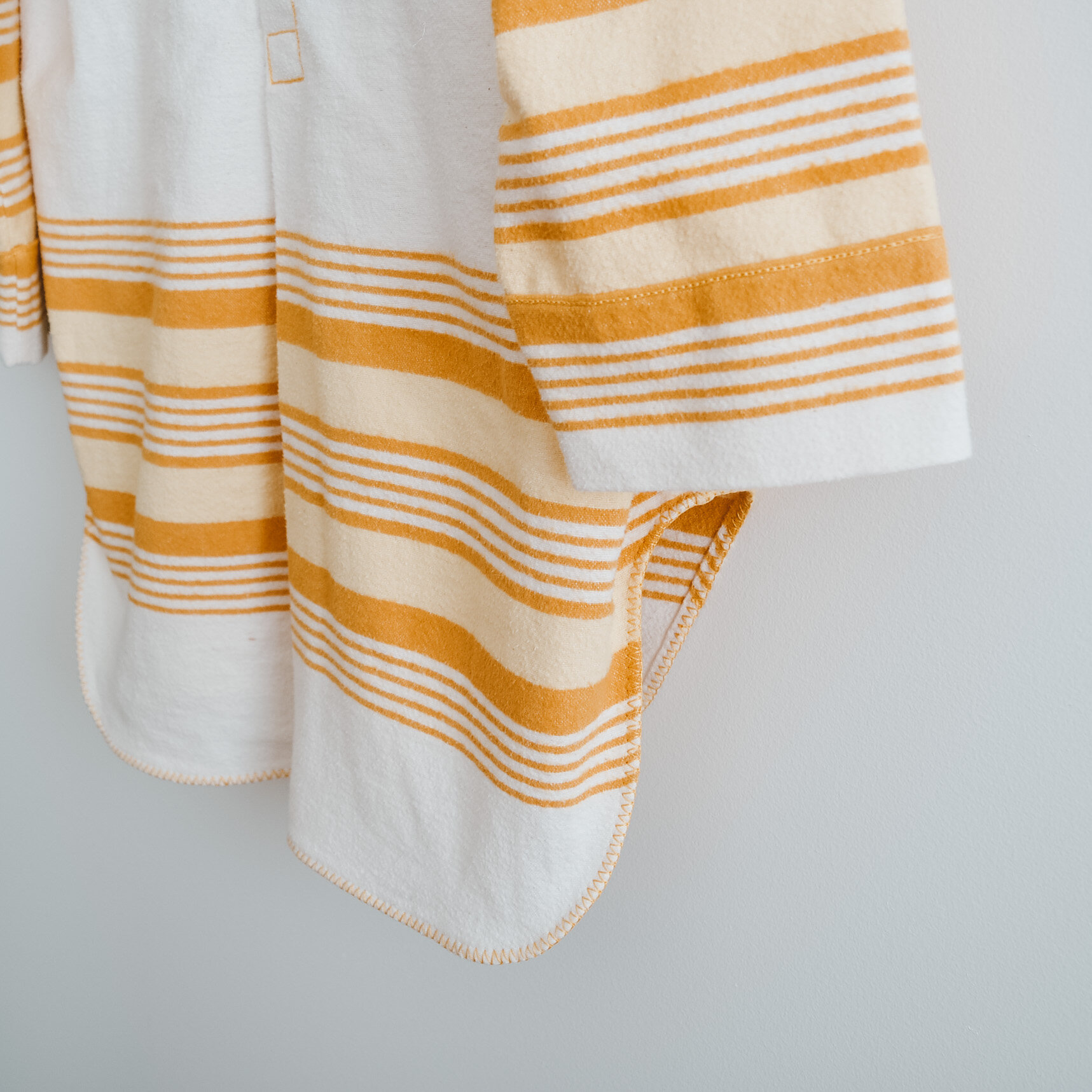Using Liberty Tana Lawn to Sew a Vintage Dress Pattern
/This is a quick make from a vintage pattern that has been in my stash for a couple years. I wanted something quick before I get into another long haul embroidery project, and this one seemed like a perfect quick sew. Not entirely sure if it is supposed to be a nightie or a dress pattern, and I was a little worried it would just end up looking like a potato sack tied up with ribbon, but in the end I am very happy with this. It is made from a vintage Anne Adams pattern that I found on Etsy. I made the ties out of the same fabric as the dress and then added a bow at the neckline to cinch it in for better coverage (it was gaping a little without this, as the neckline is cut on the bias). I used lace for the neckline tie and bow and even though it makes this lean more towards looking like pyjamas I still love the look! Lace gives such a romantic look. The fabric I used is a Tana Lawn from Liberty and the lace is from Fine French Laces. I haven’t really felt inspired to start making winter clothes yet, so I think I am just going to carry on with summer dresses and admire them in my closet until next summer comes.
The side seams are just straight french seams, and then pretty much everything else is just finished with a narrow hem. I chose to hand sew all the narrow hems and then I also hand stitched the casing for the lace bow around the neckline. The fabric is Liberty of London Tana Lawn, which is a very lightweight but still crisp cotton fabric, I used the Sufyan pattern in green. You can get the fabric here: Liberty London
The lace I used for the neckline is one I ordered online from a shop called Fine French Laces (www.cottonlace.com) and I think it suits the dress perfectly. I can’t seem to find the exact lace I used on the website but it was an ecru coloured lace under their rare lace category, and it is about 2 cm thick. They have lot’s of similar ones currently available though!
And of course the pattern is vintage so I don’t have an exact link to where you can buy it, but my favourite place to look for vintage sewing patterns is Etsy.

